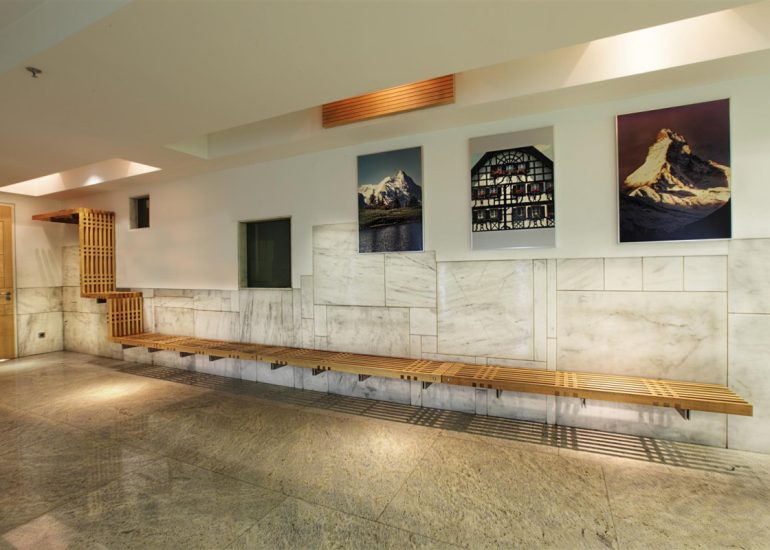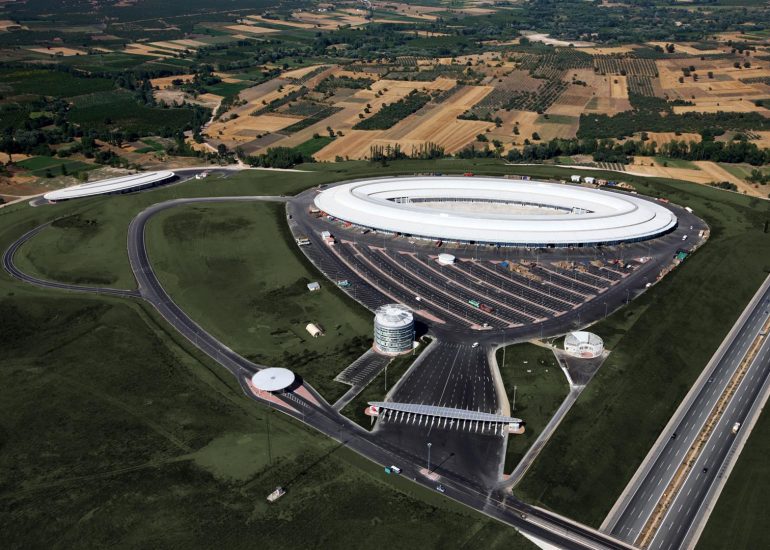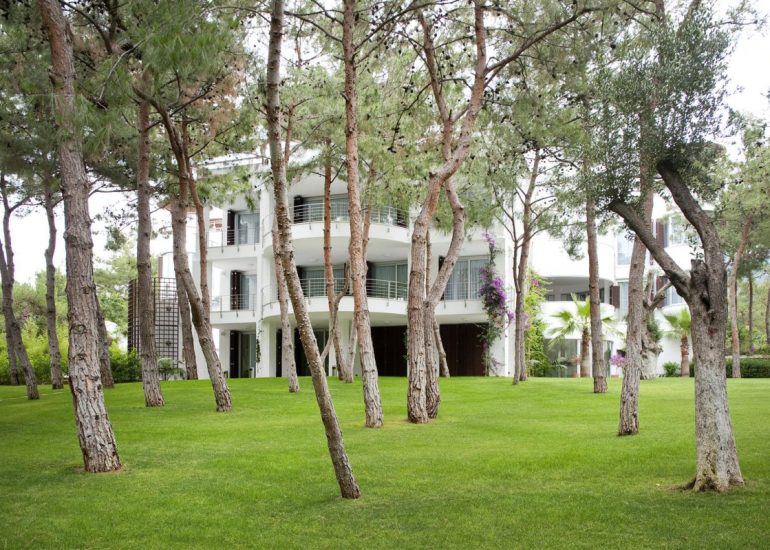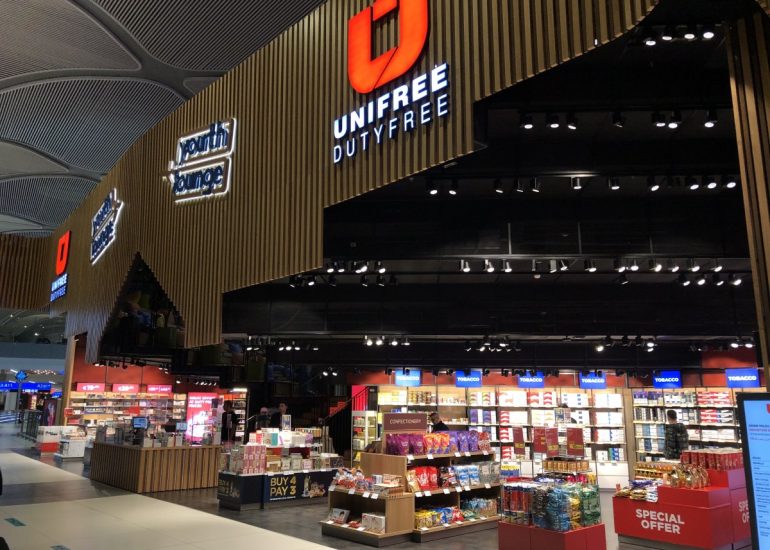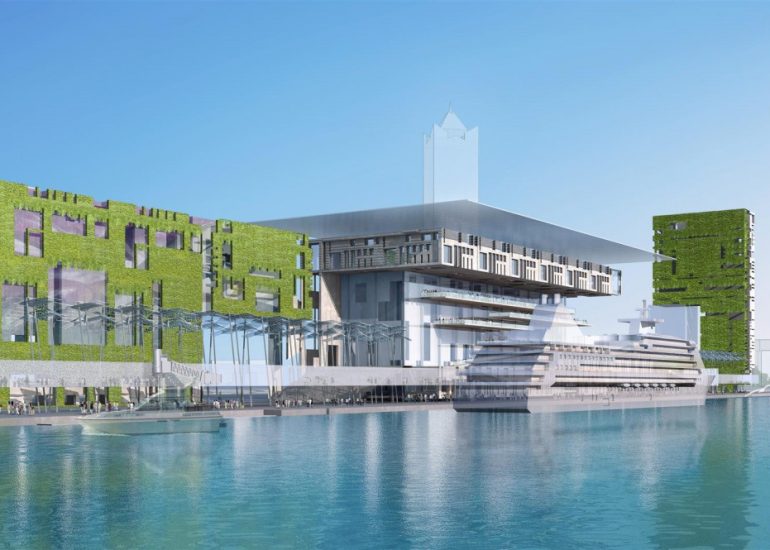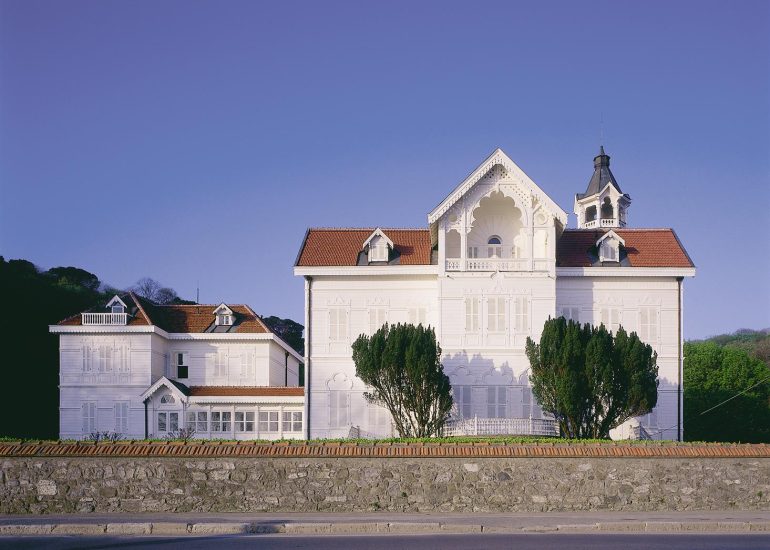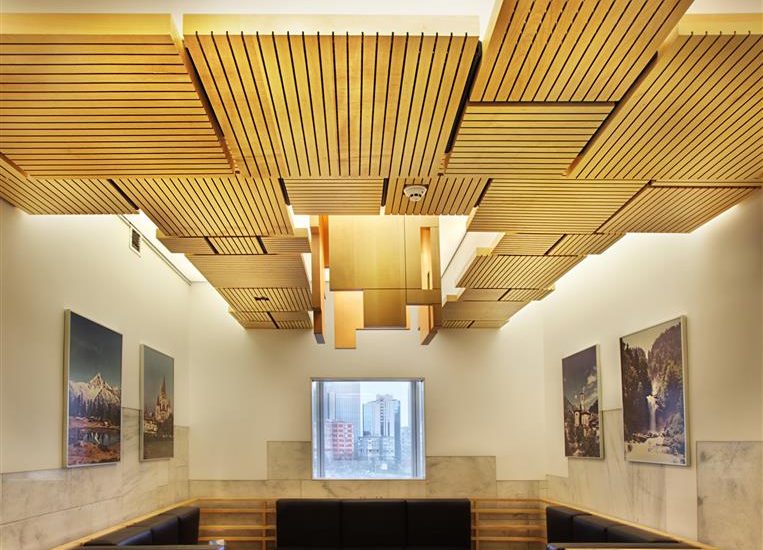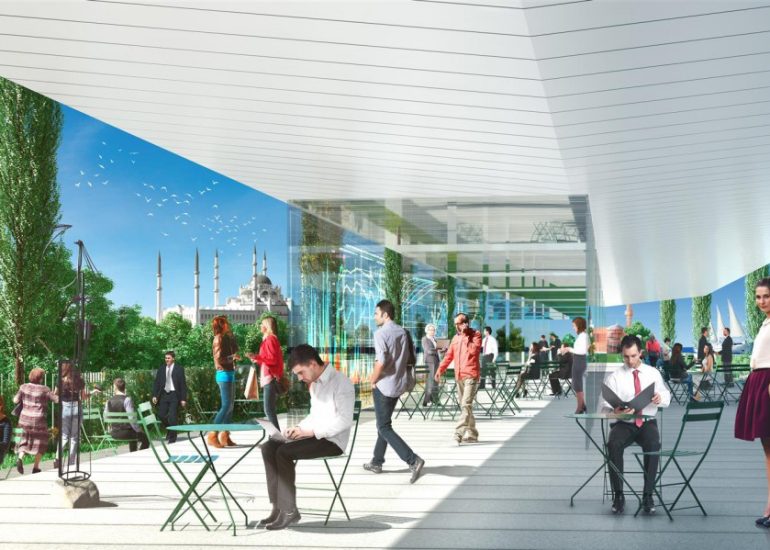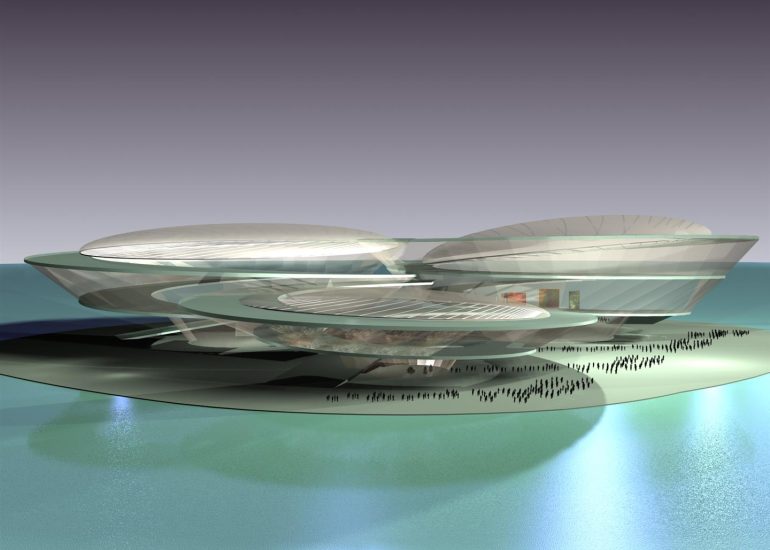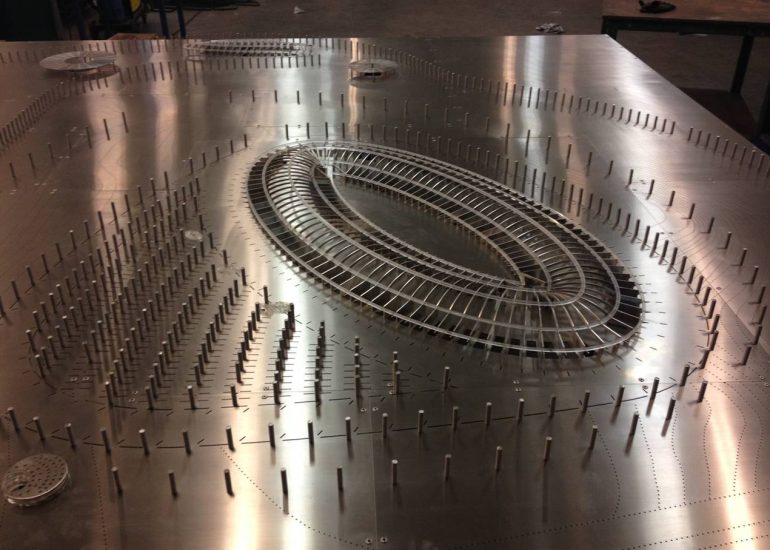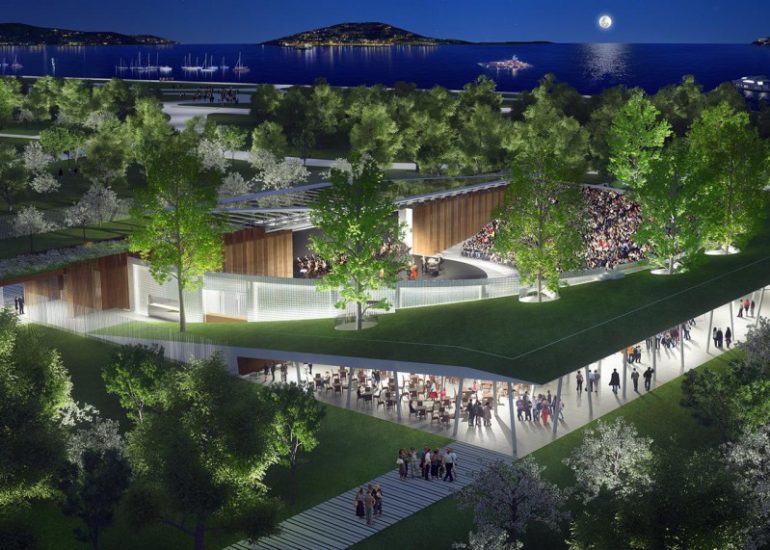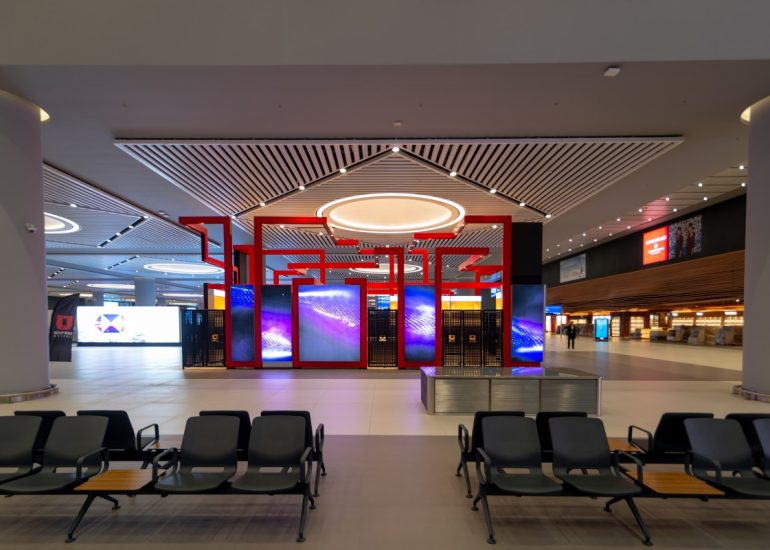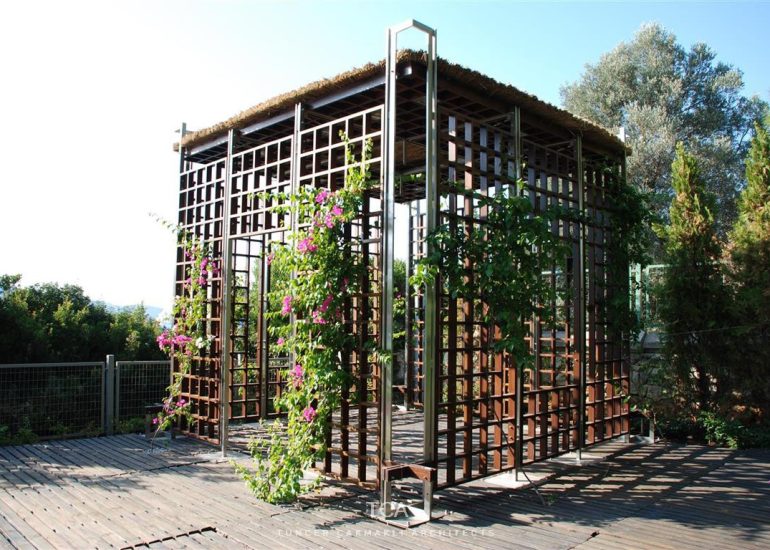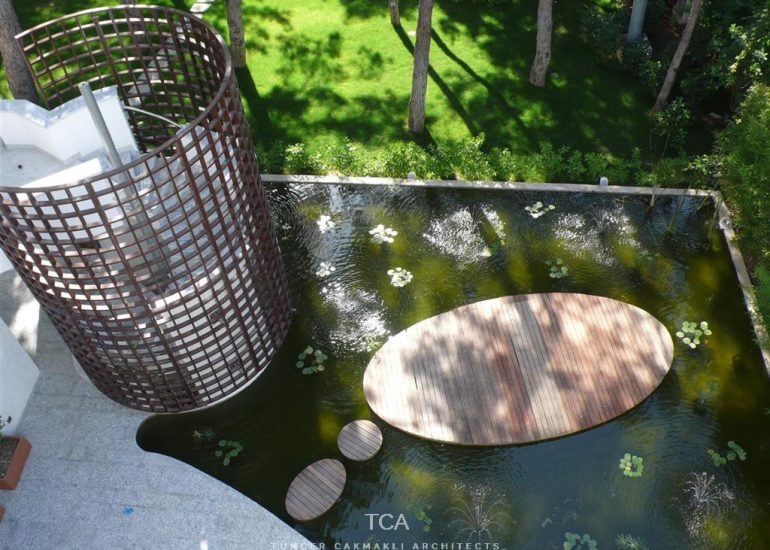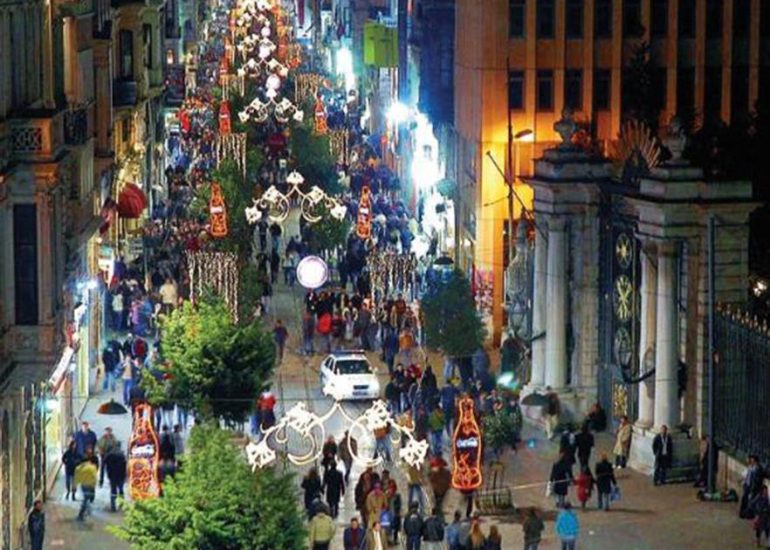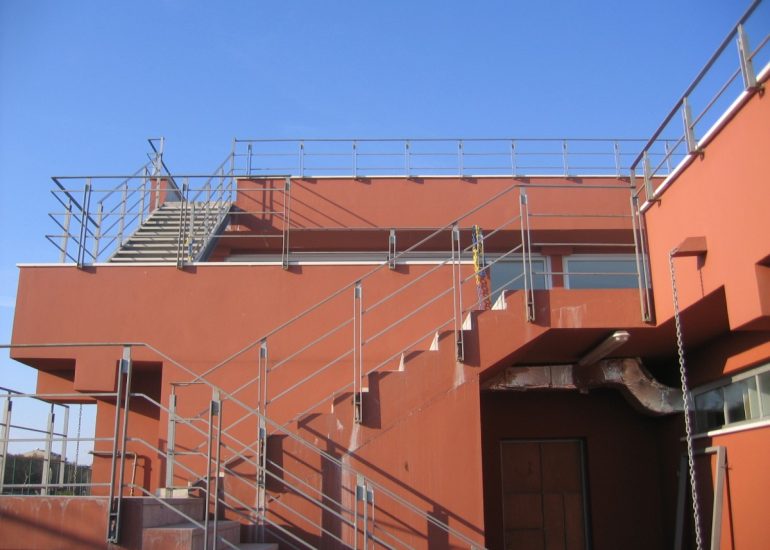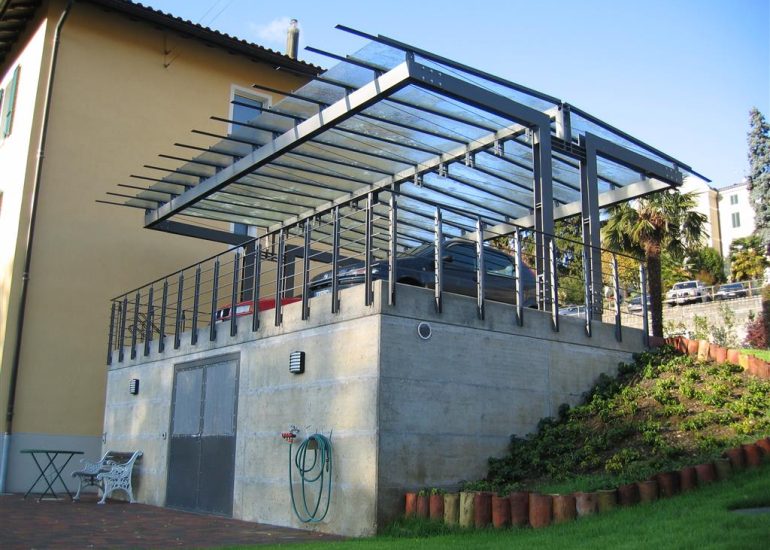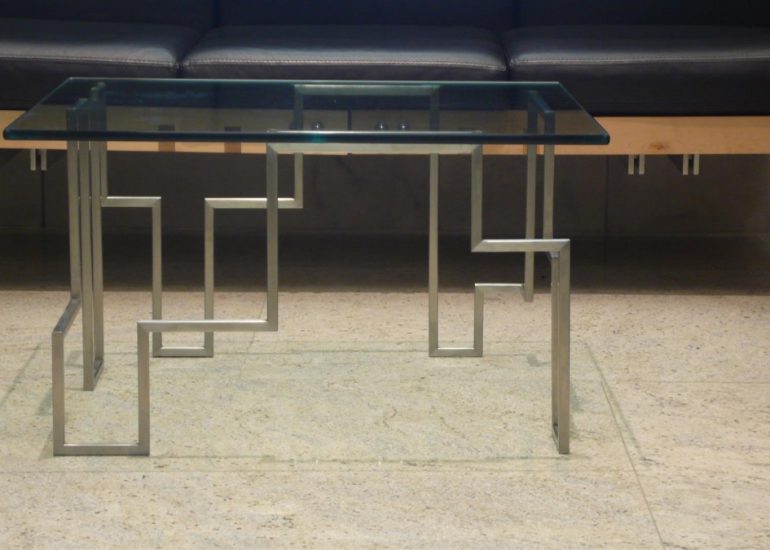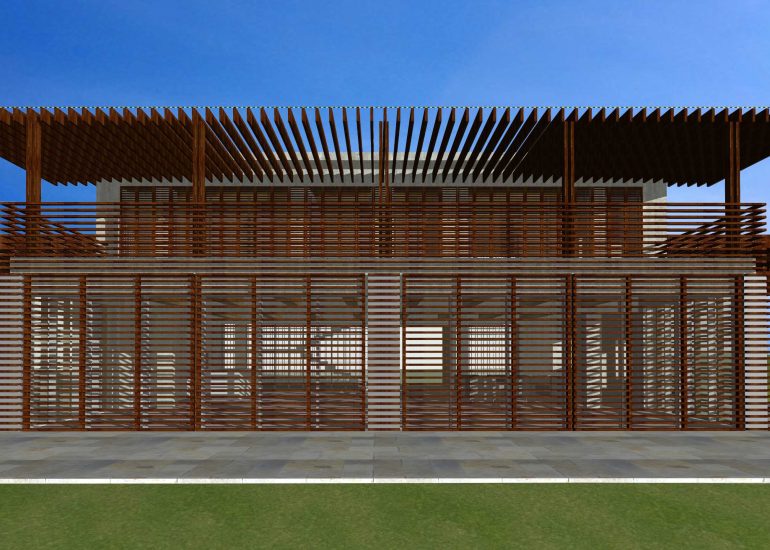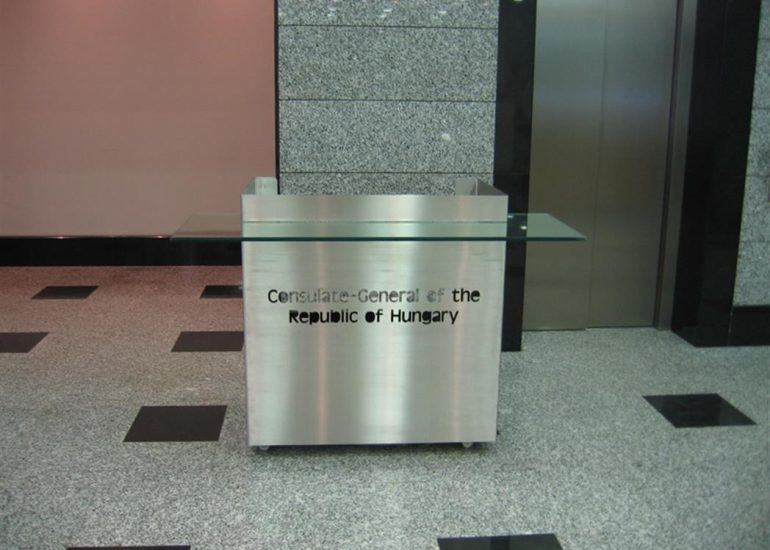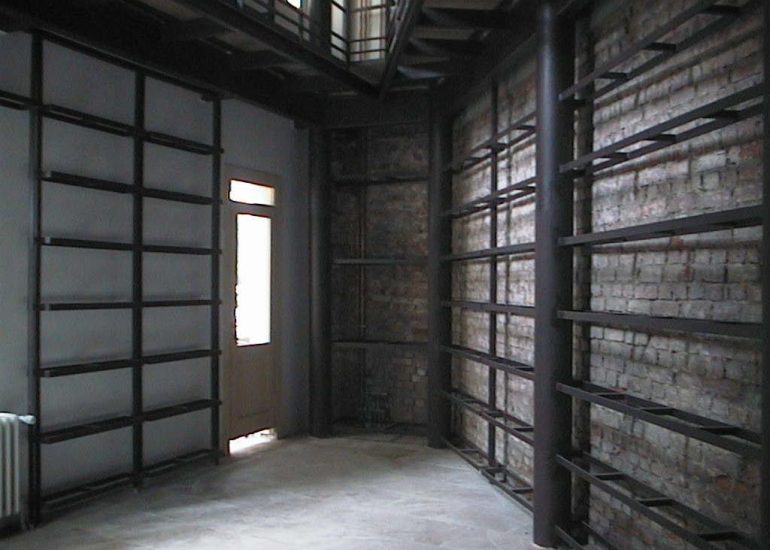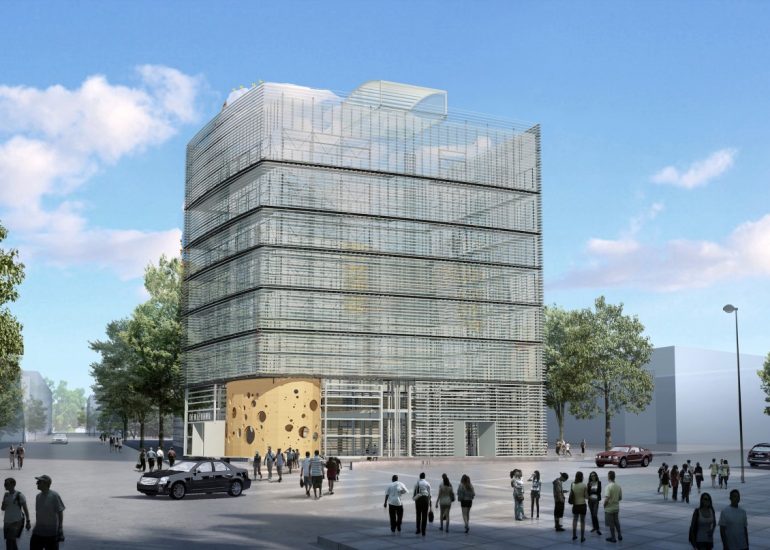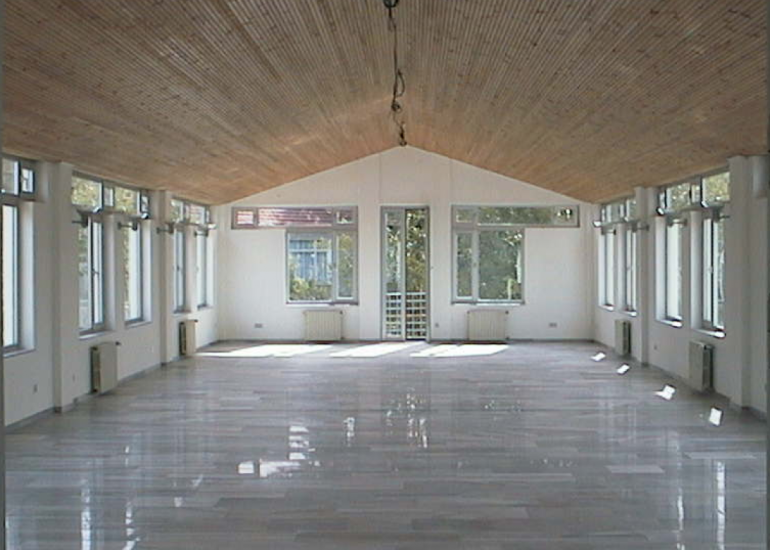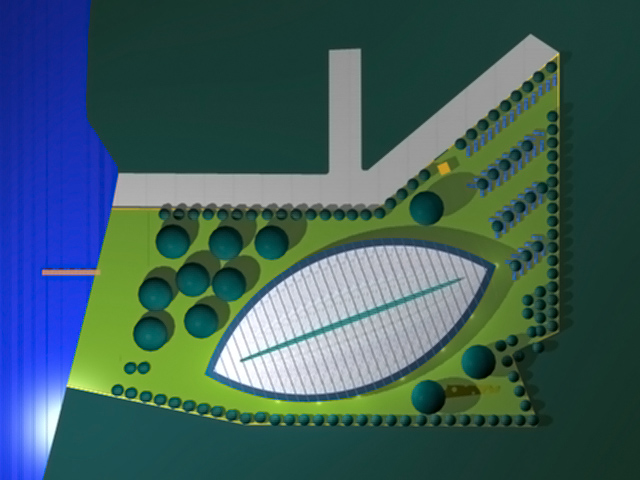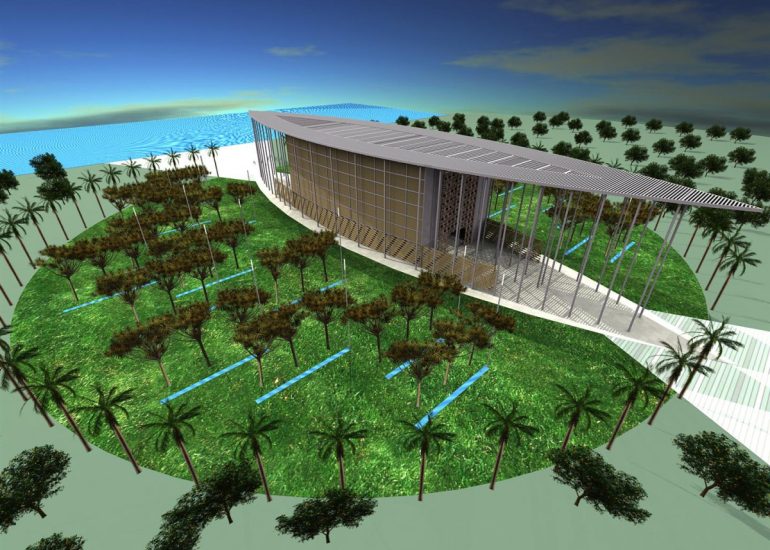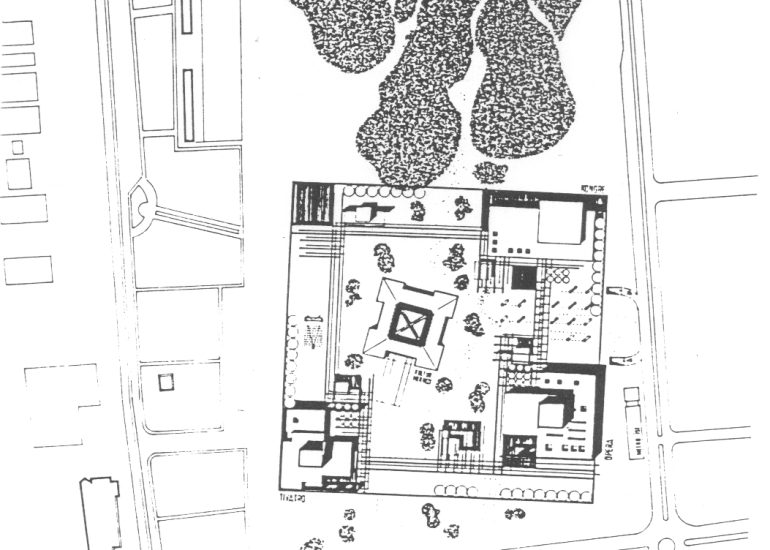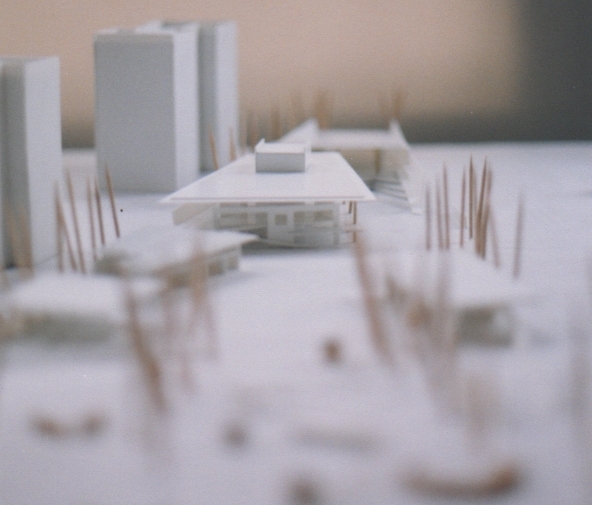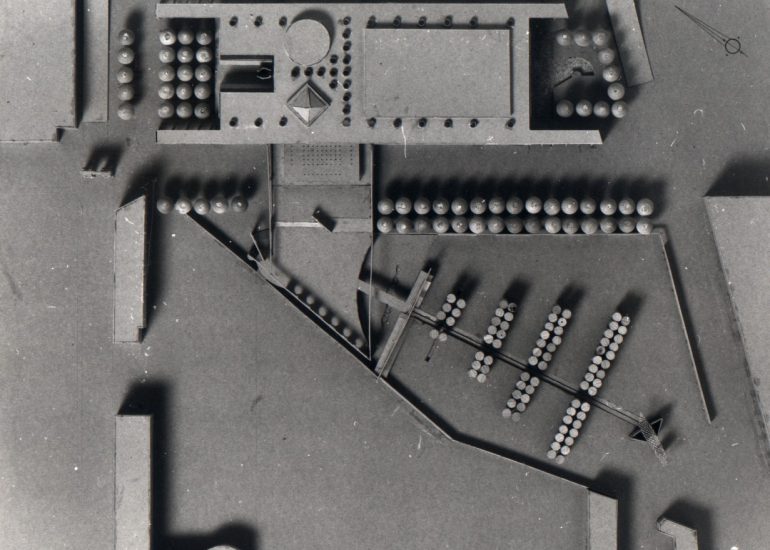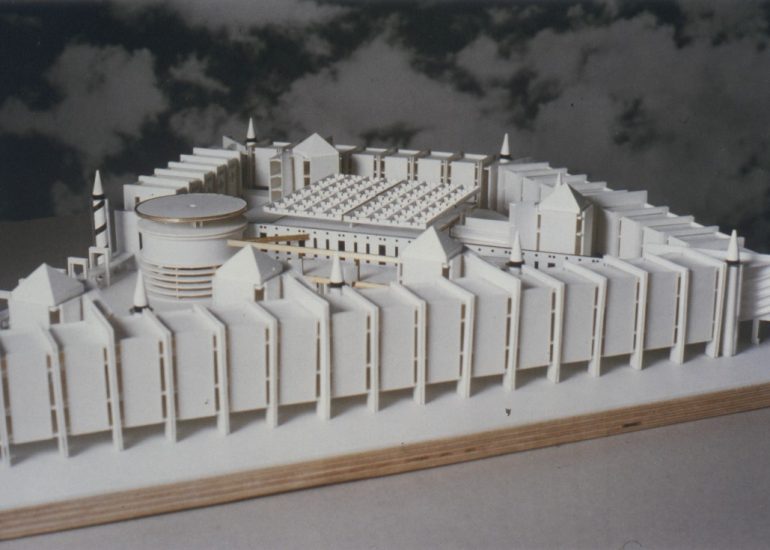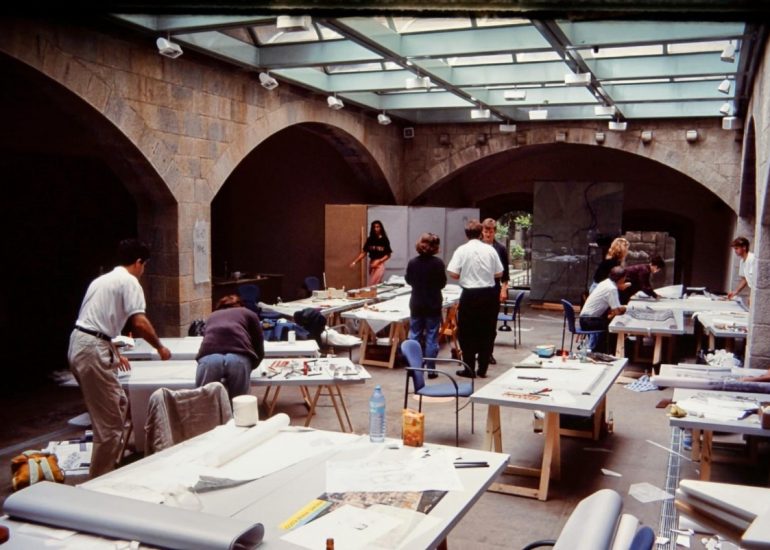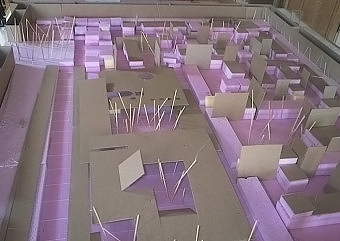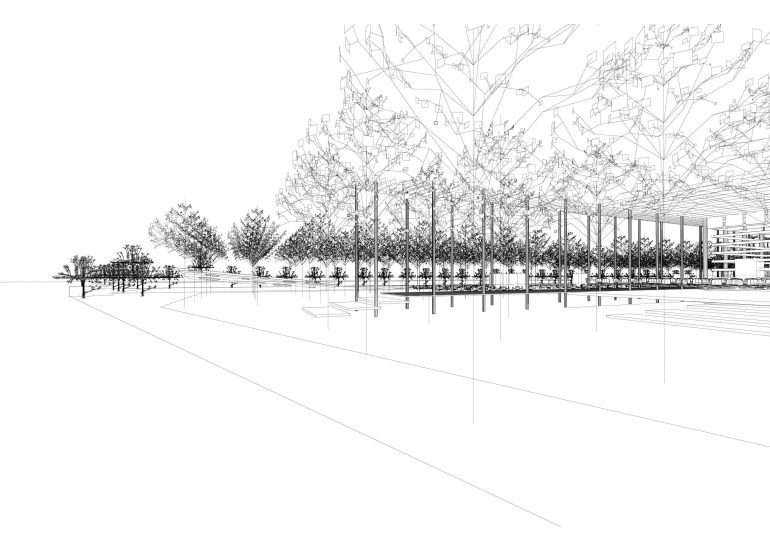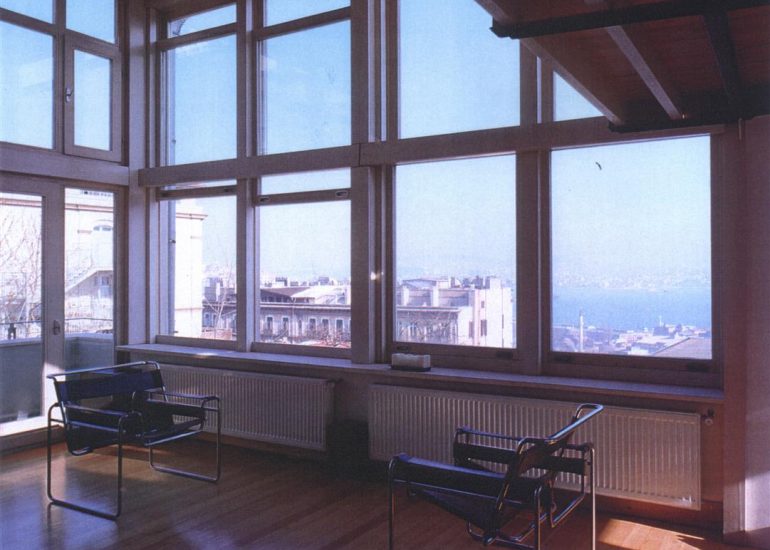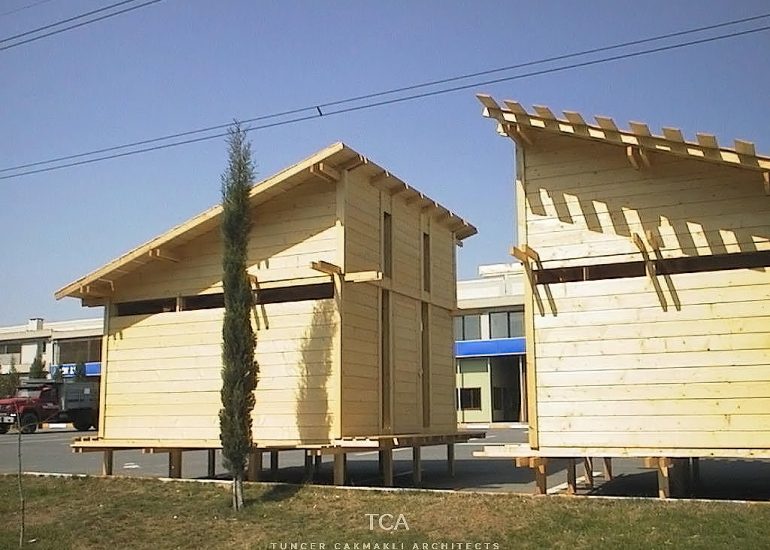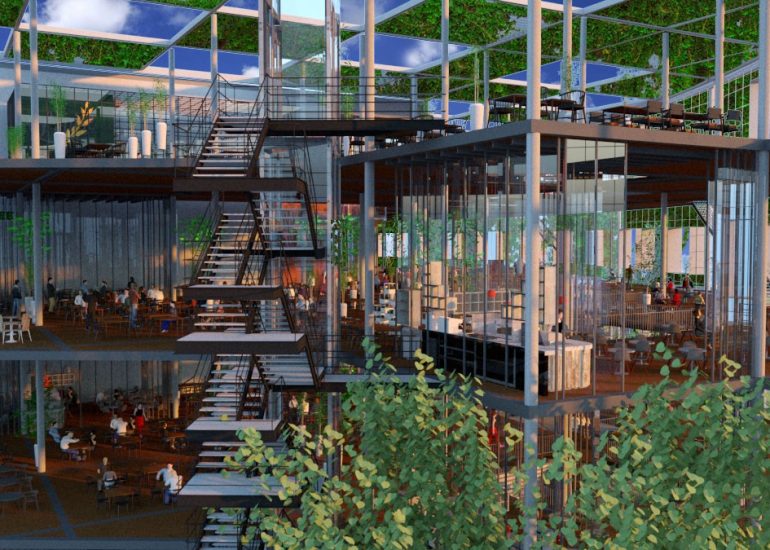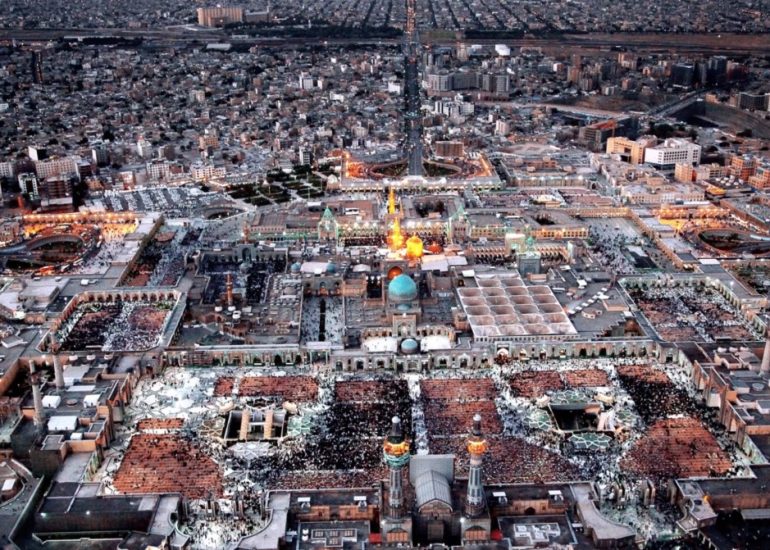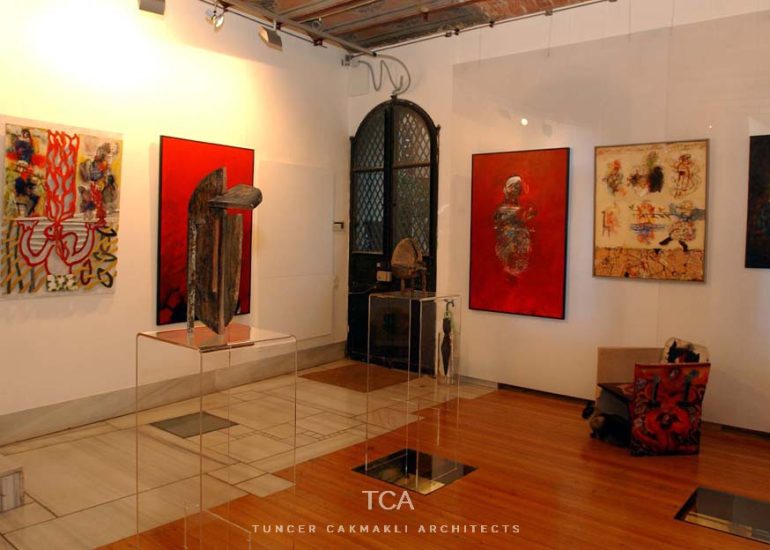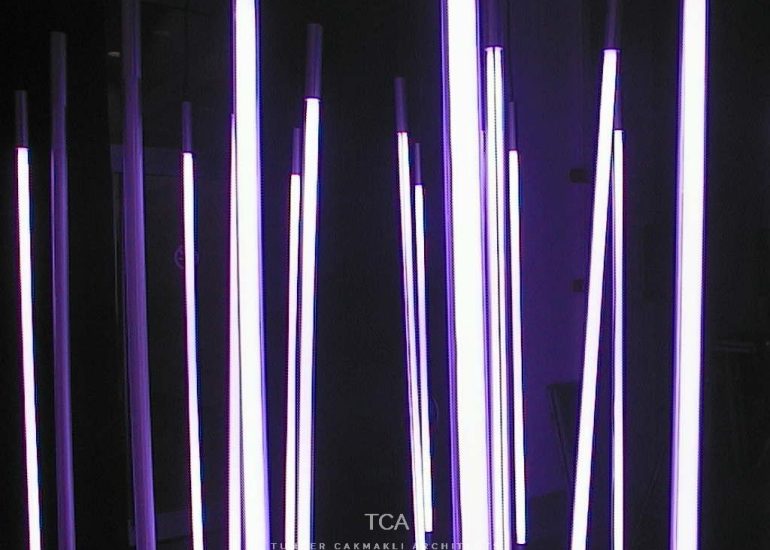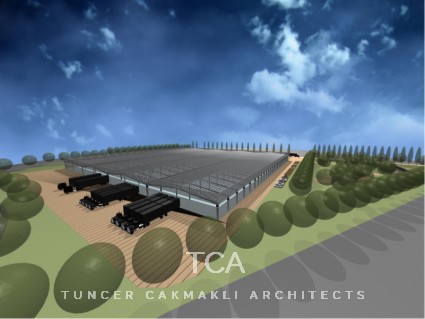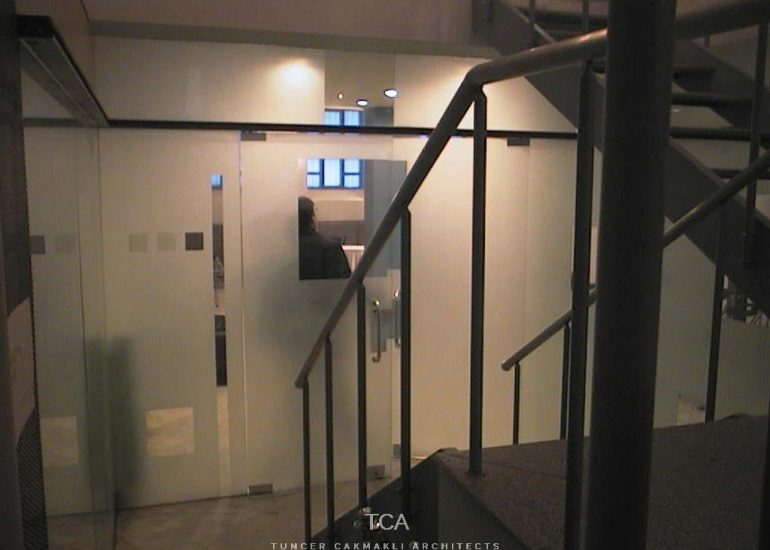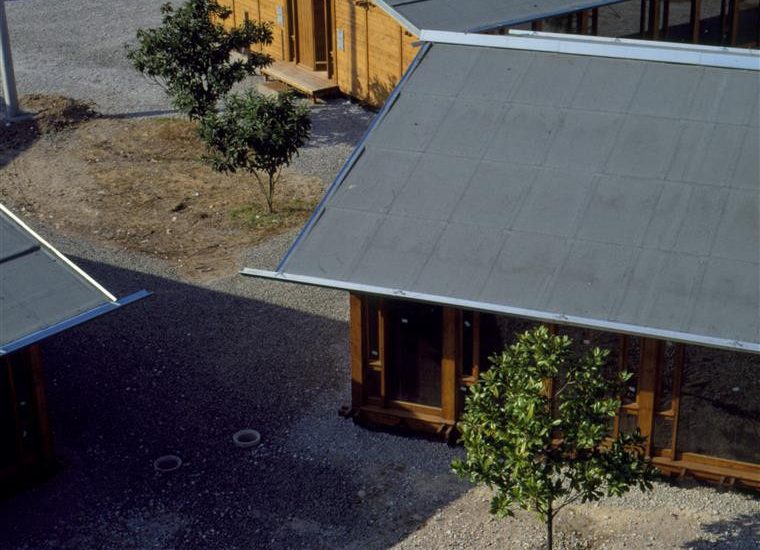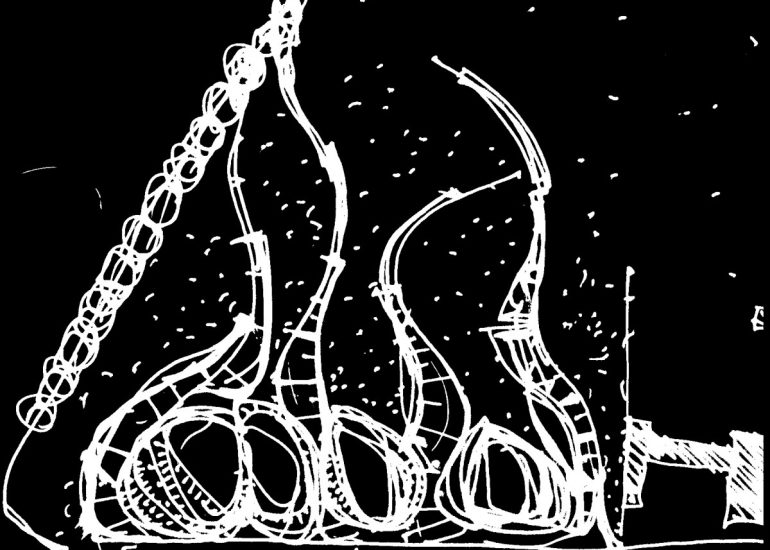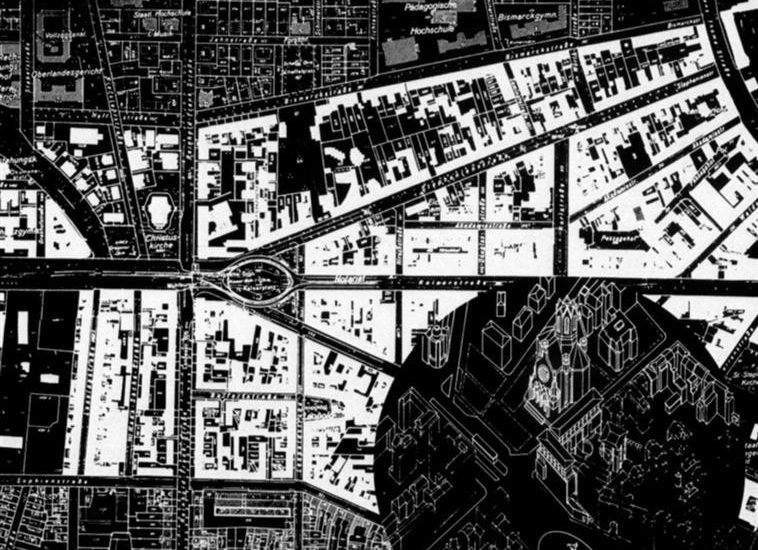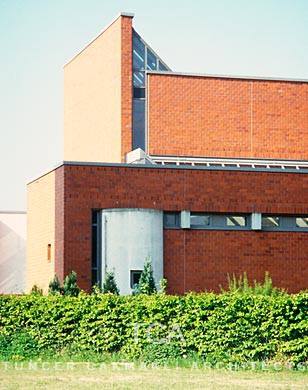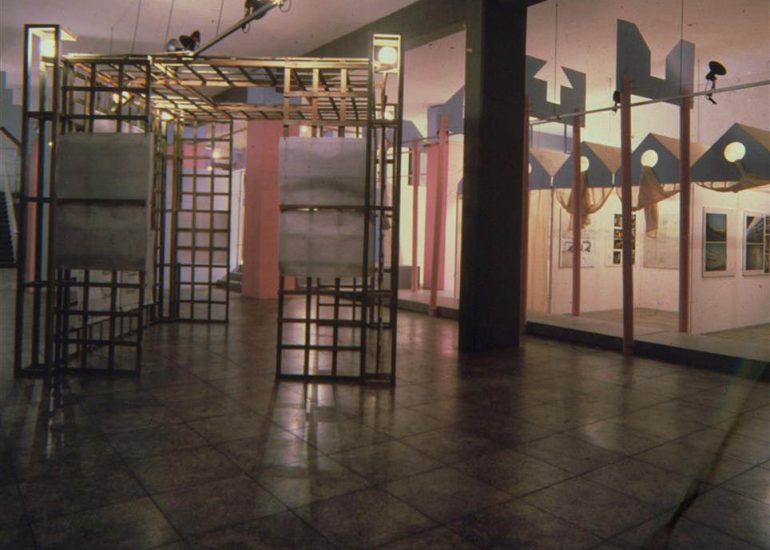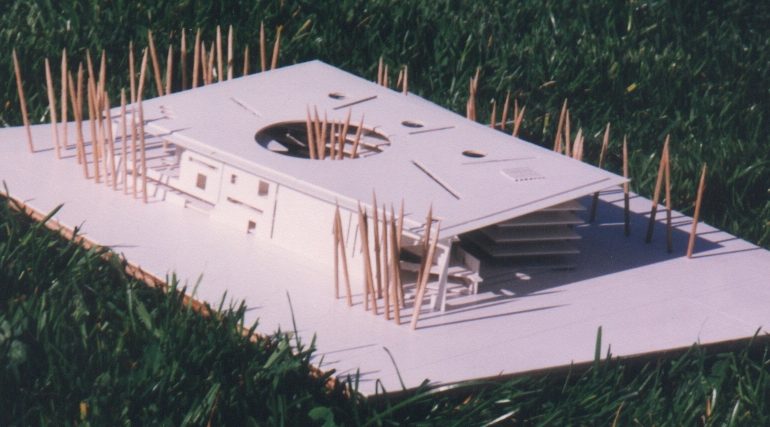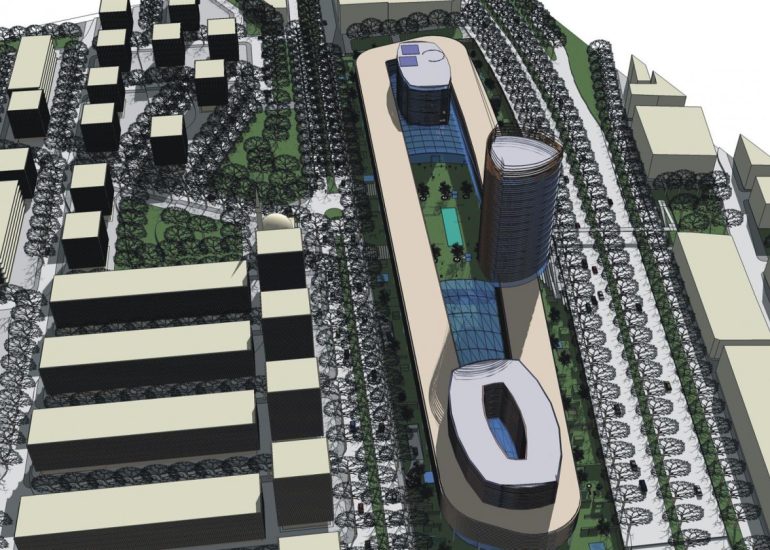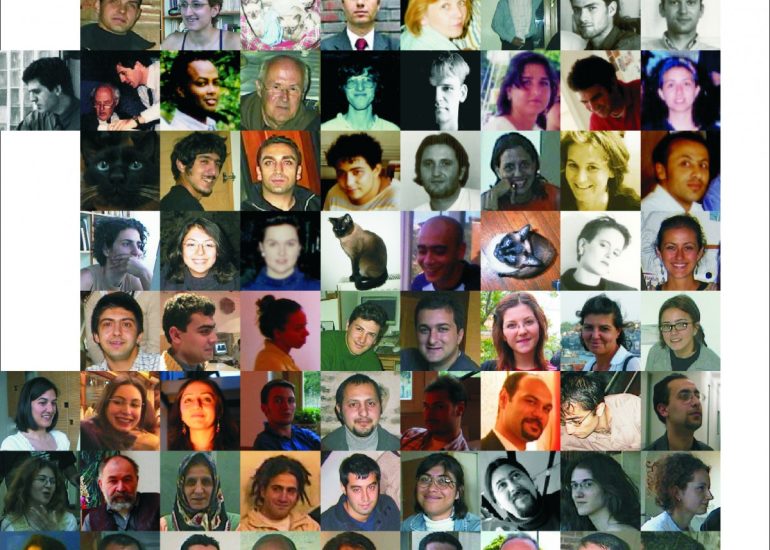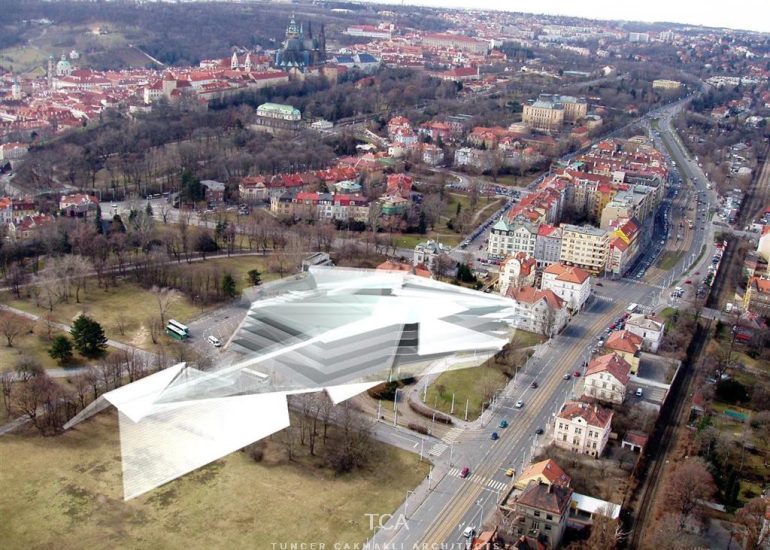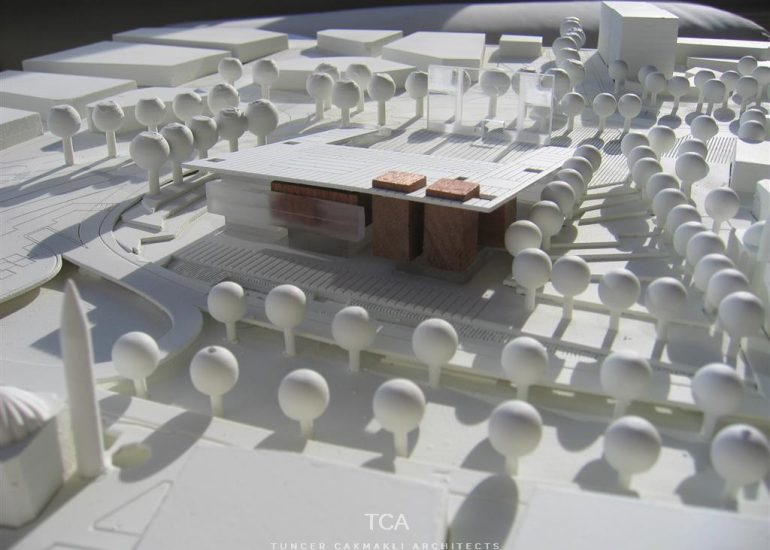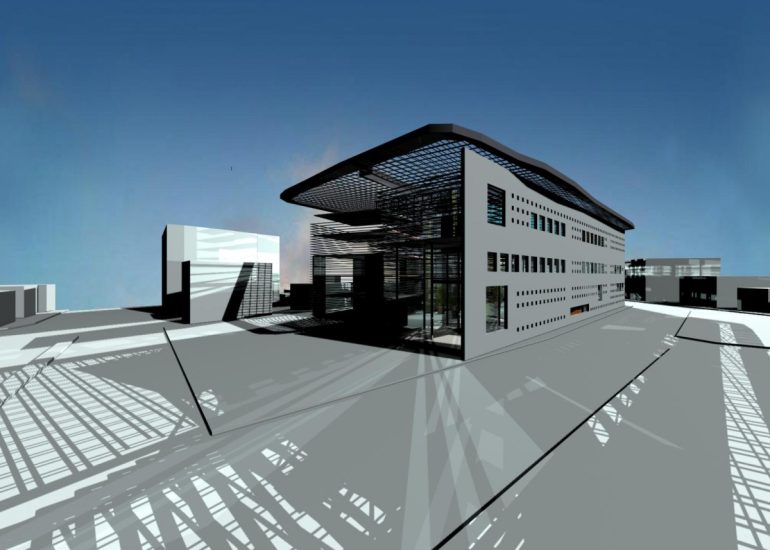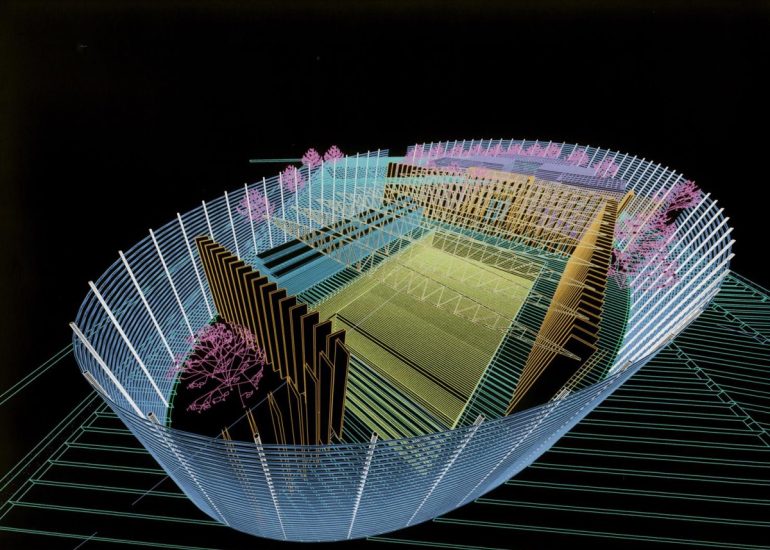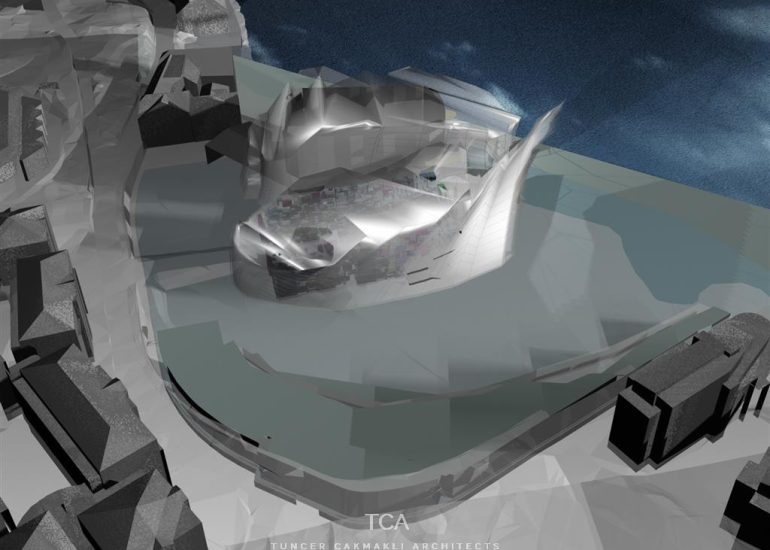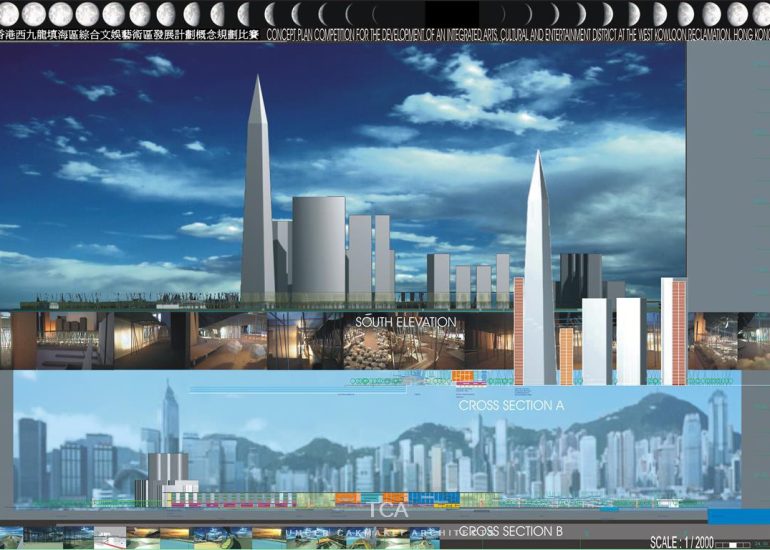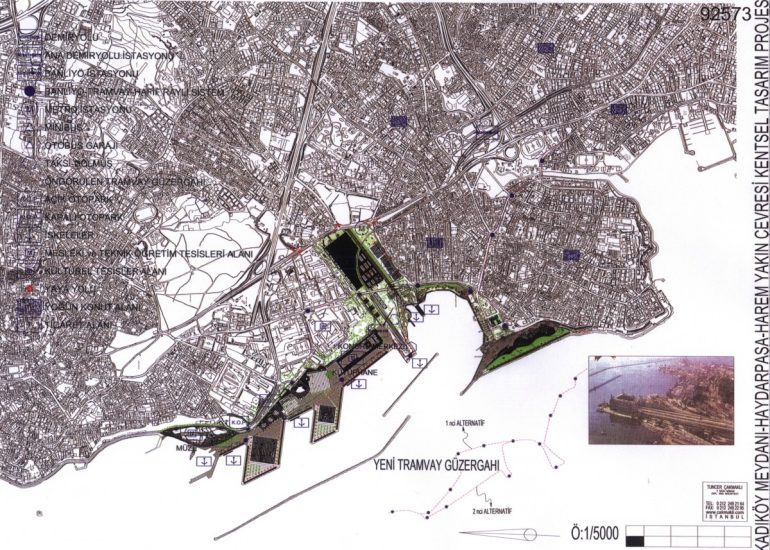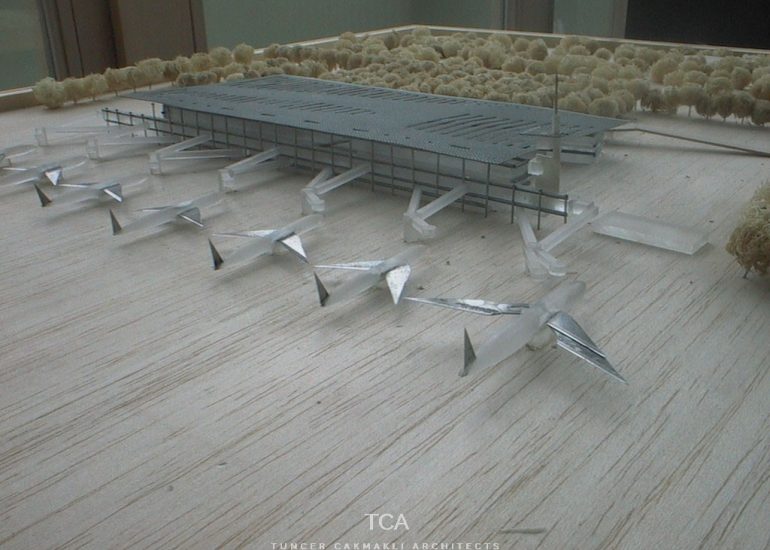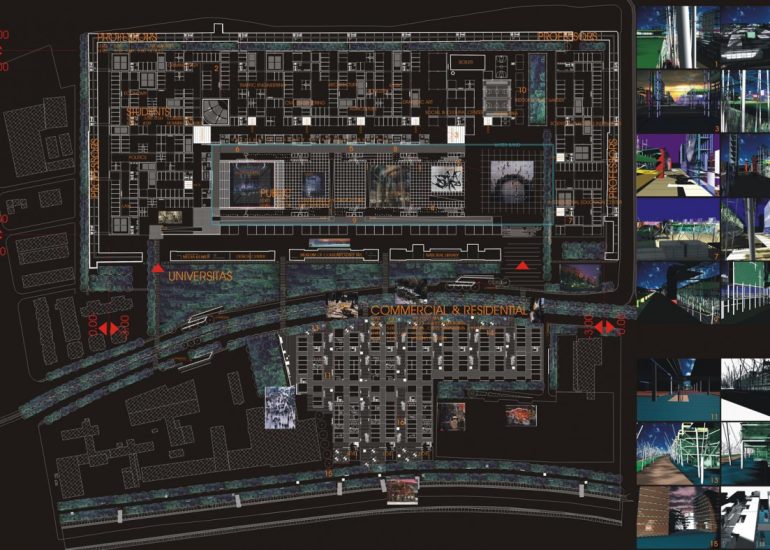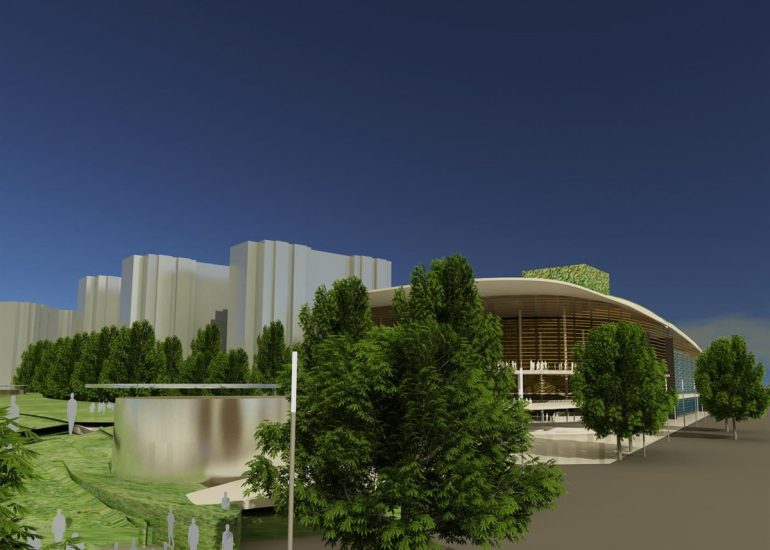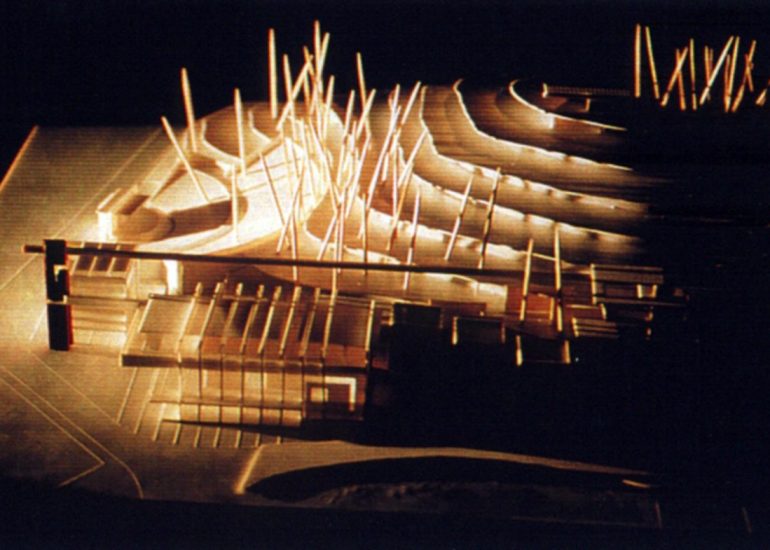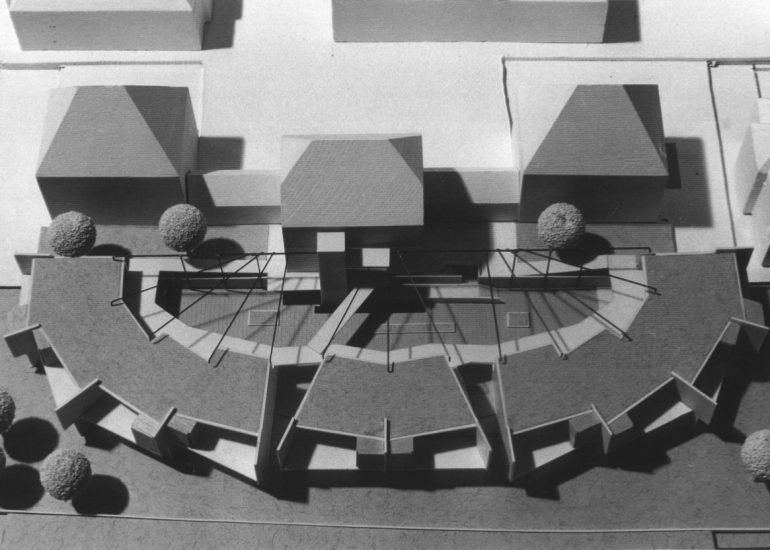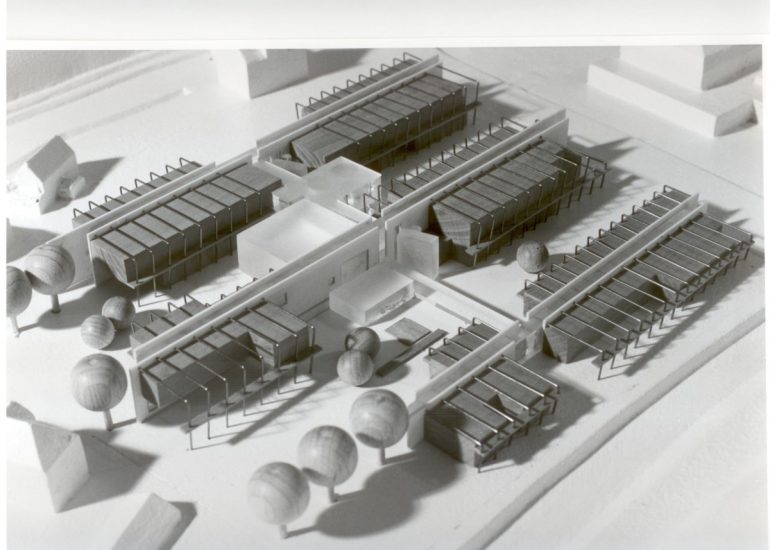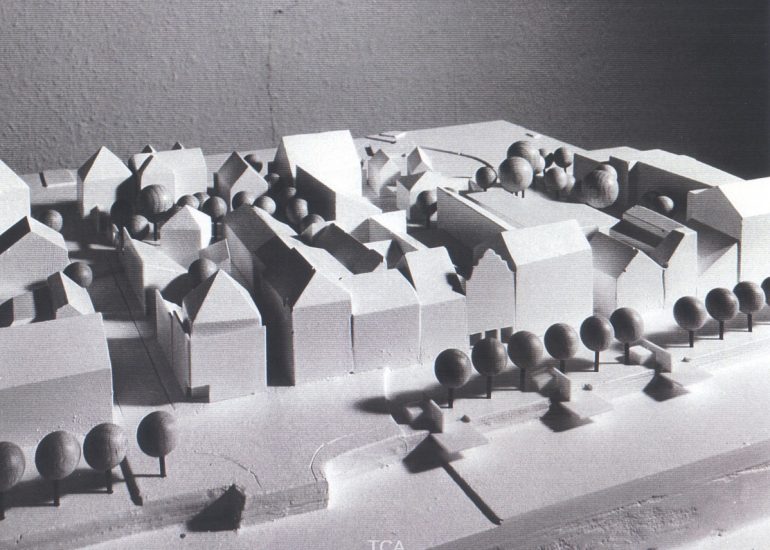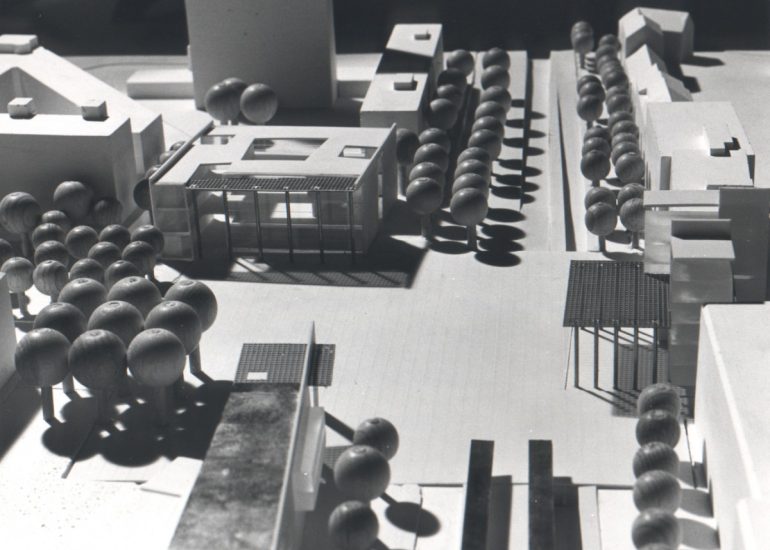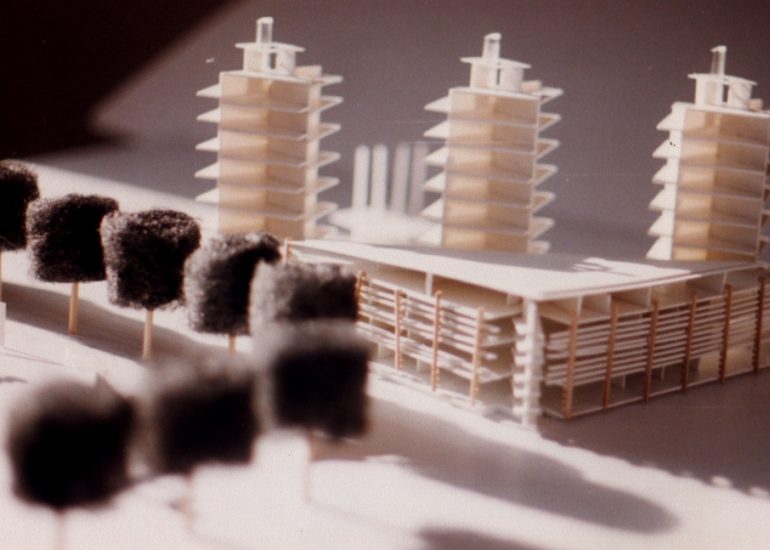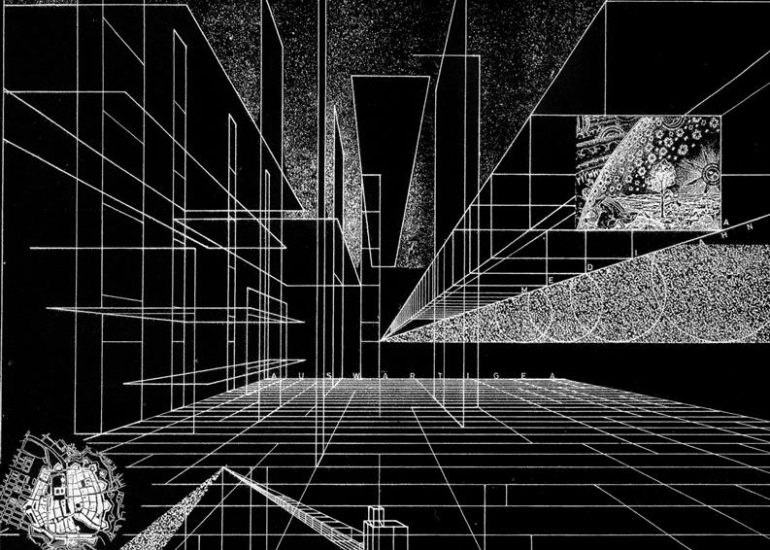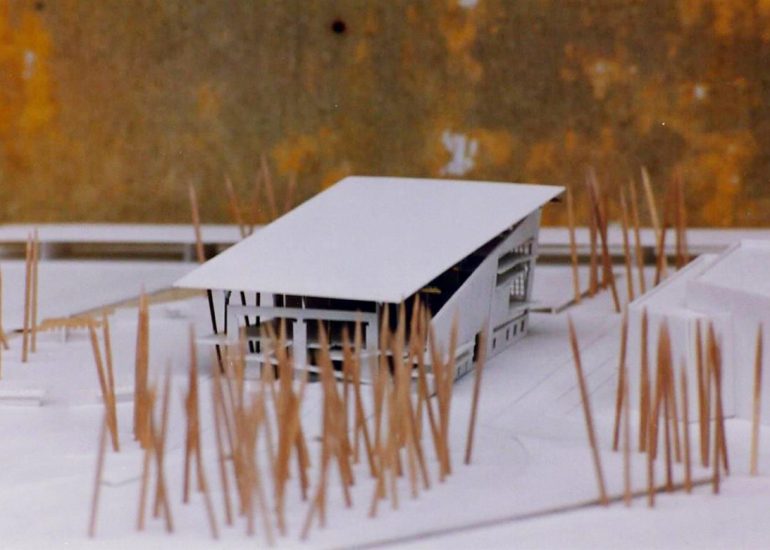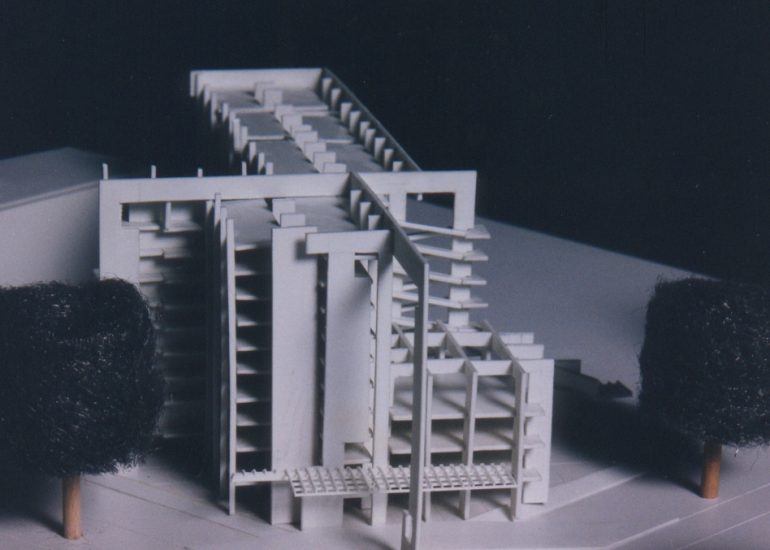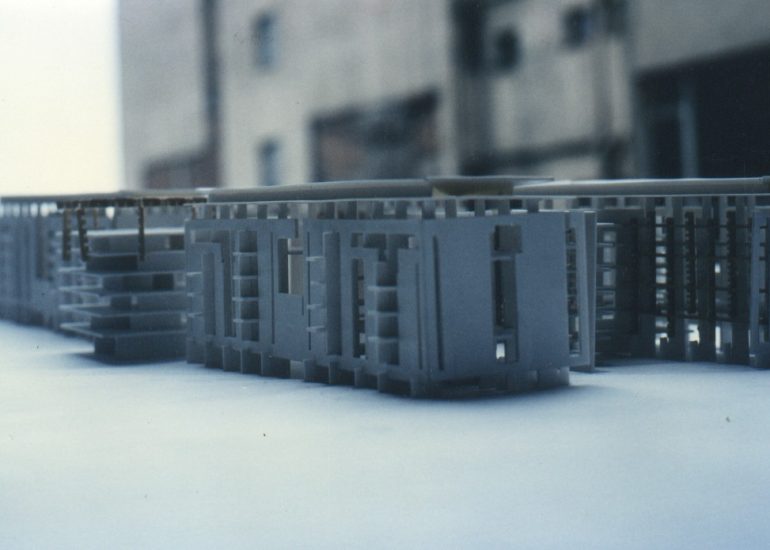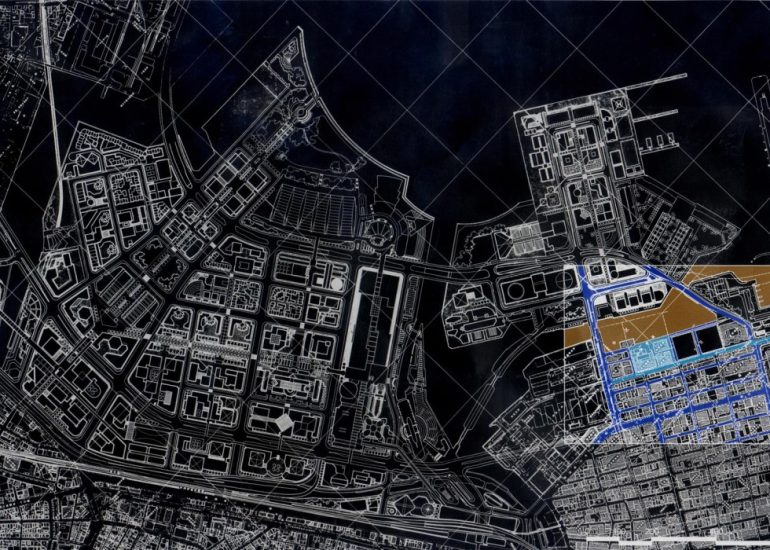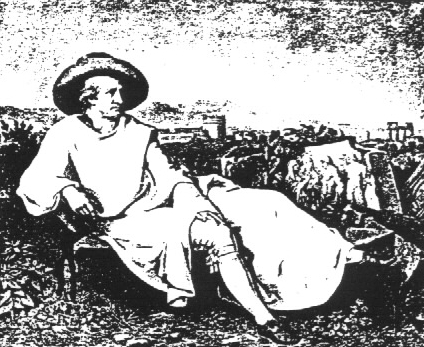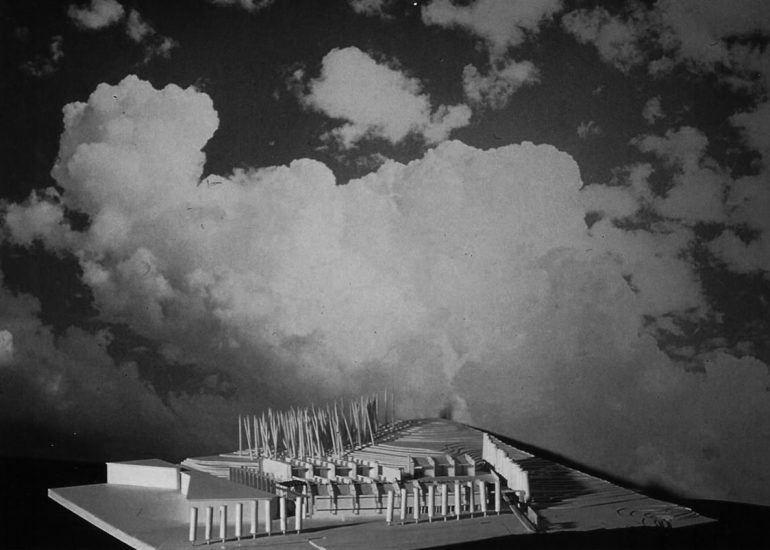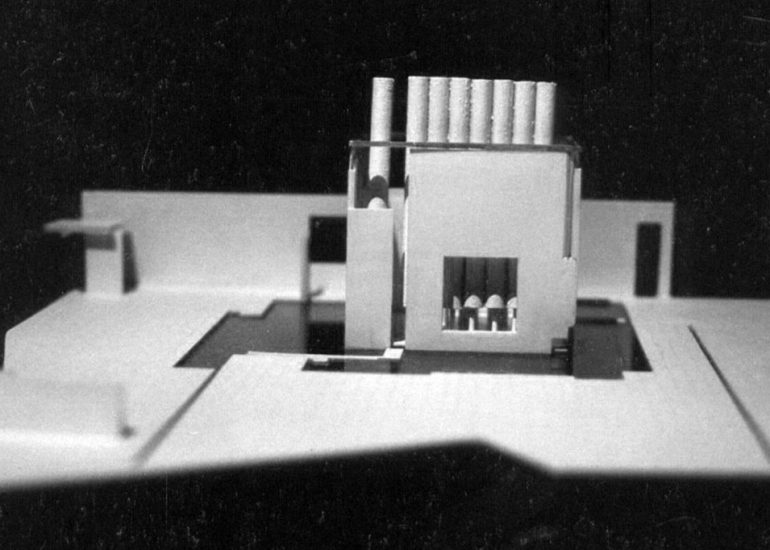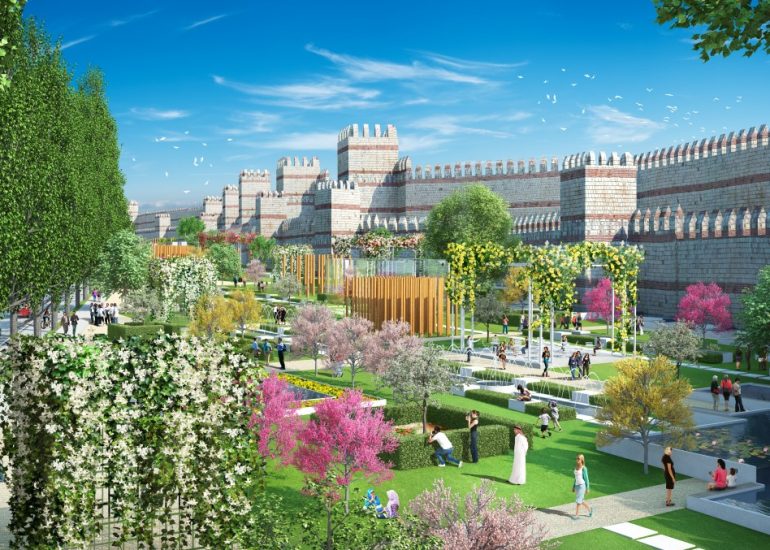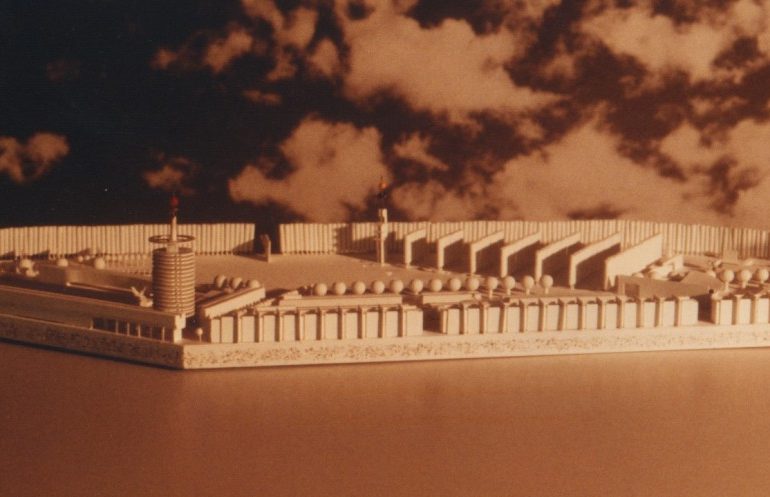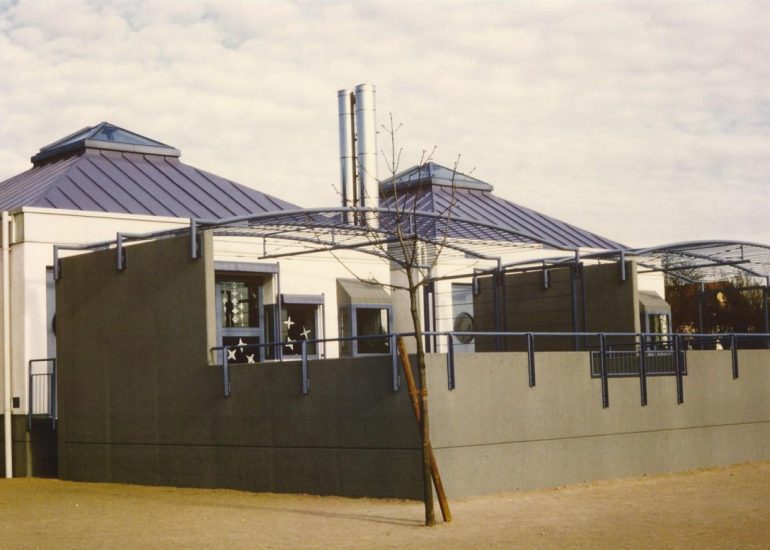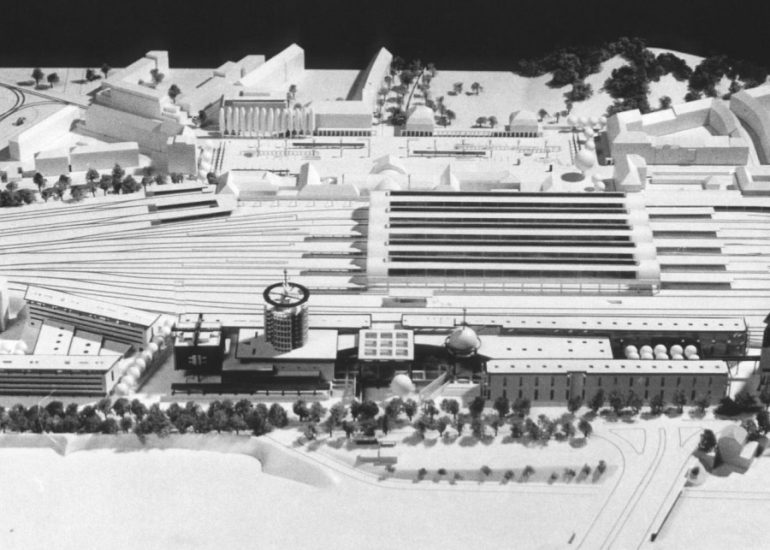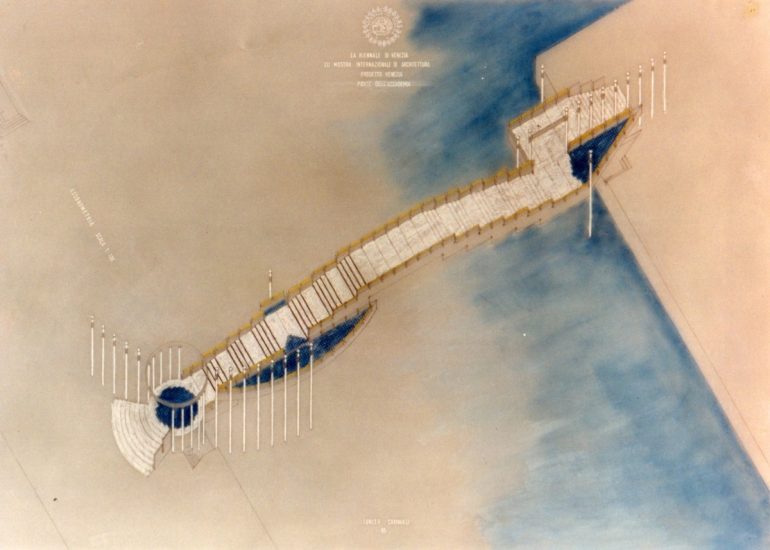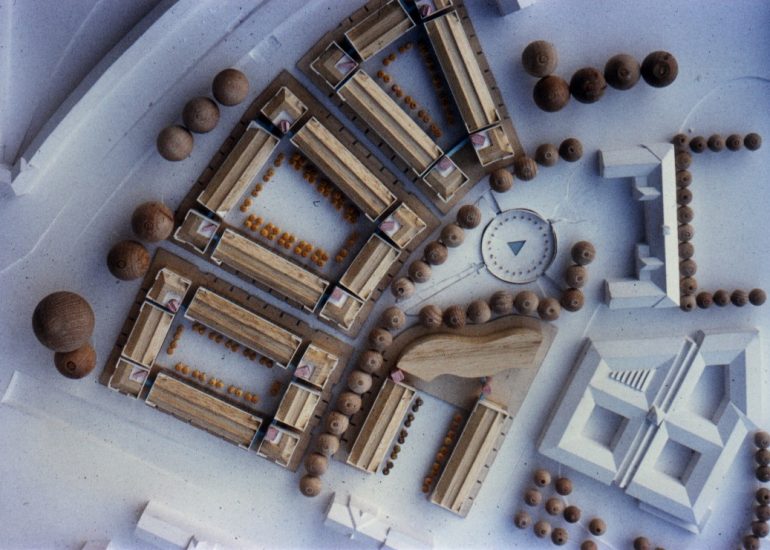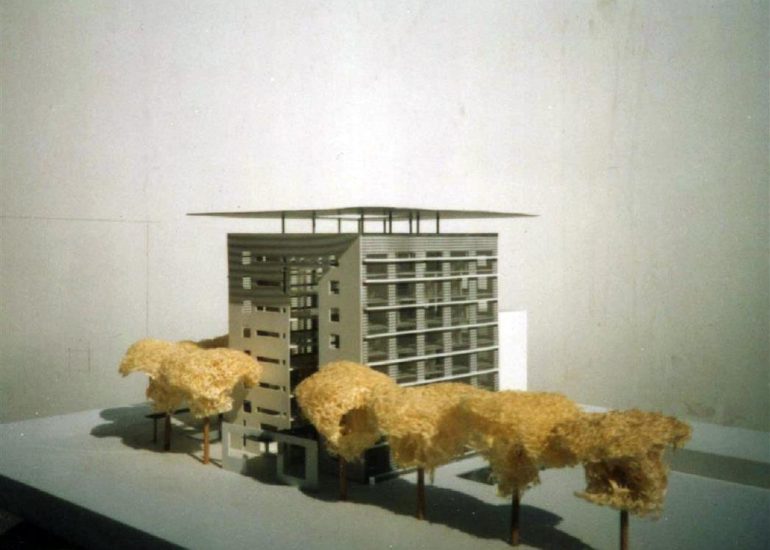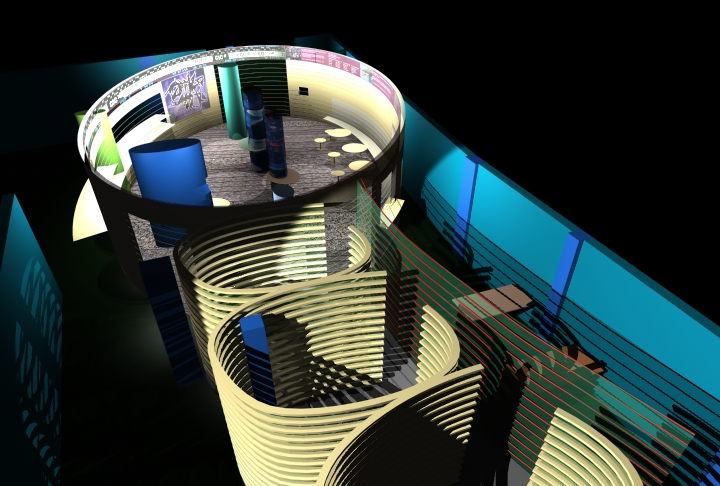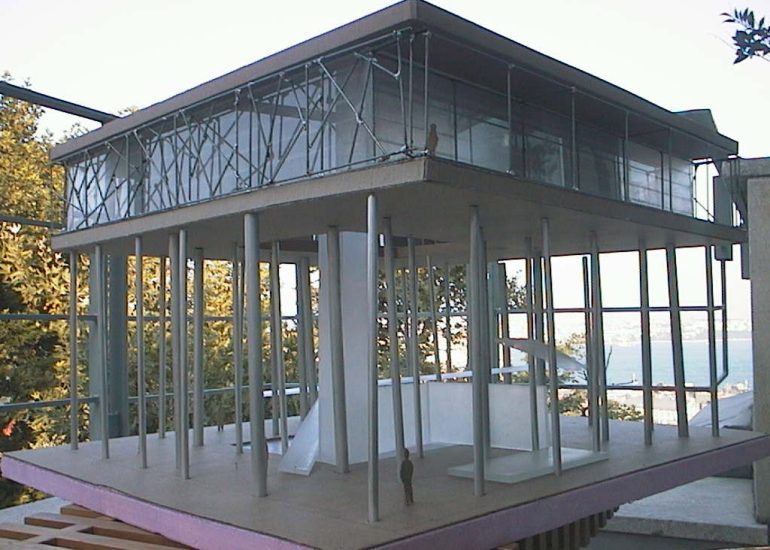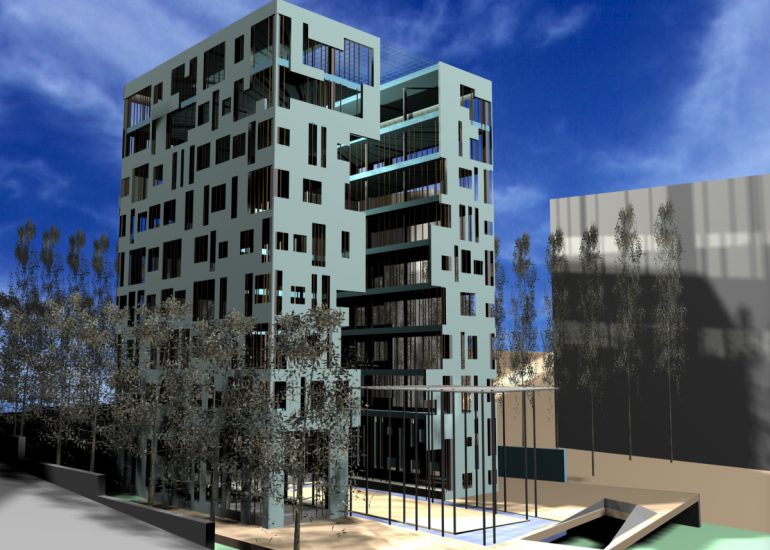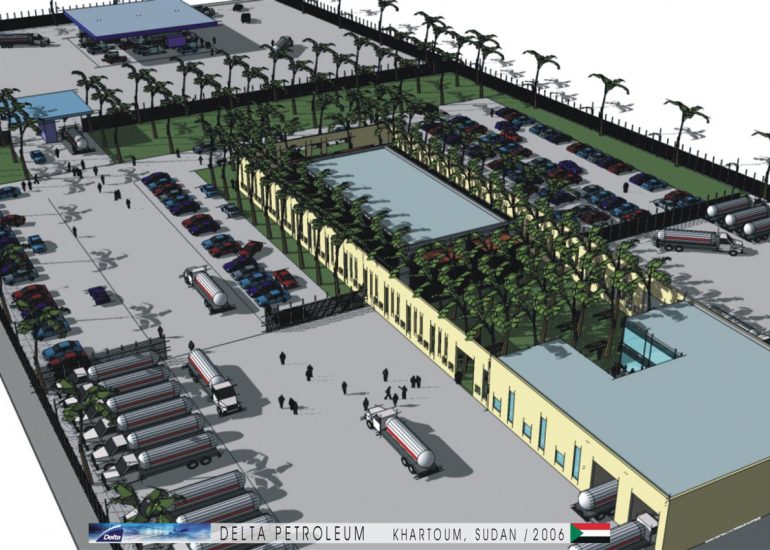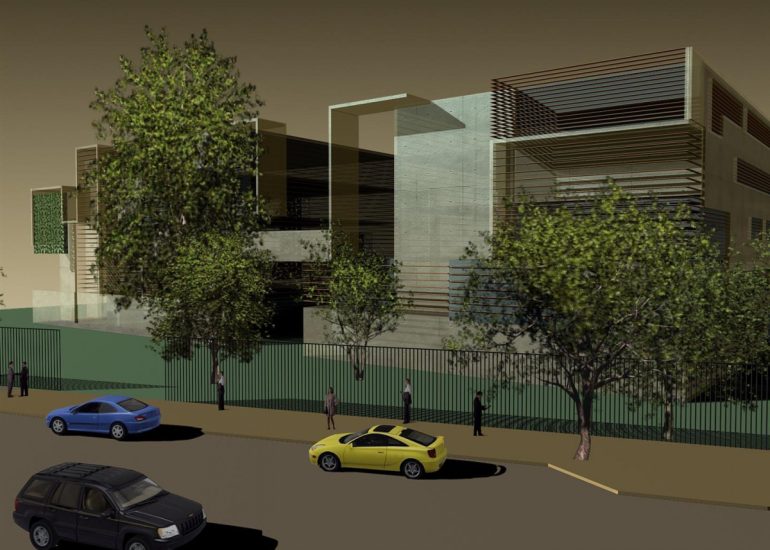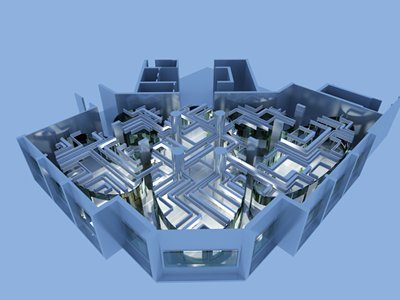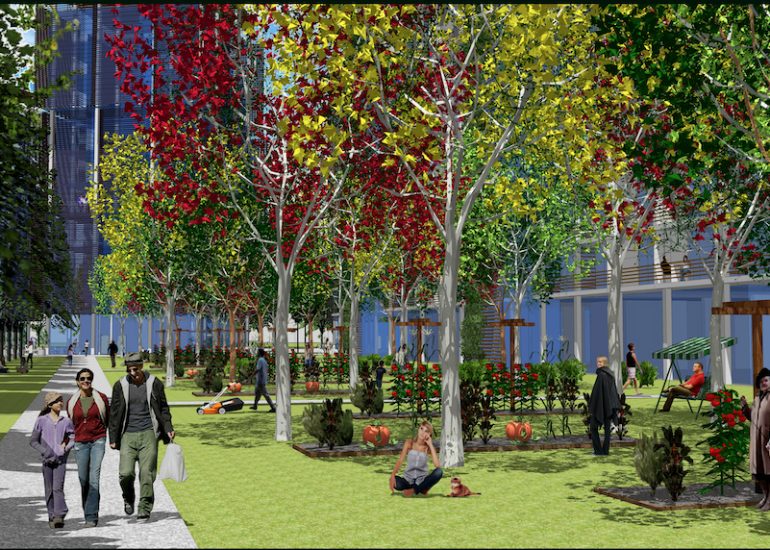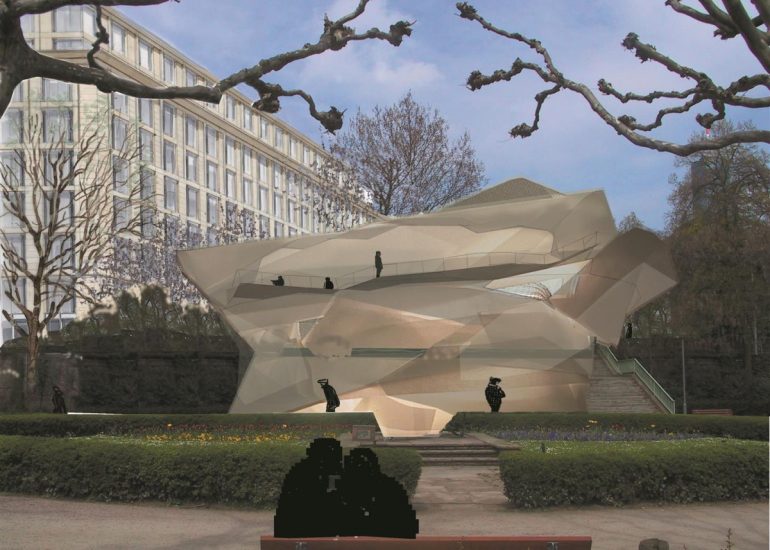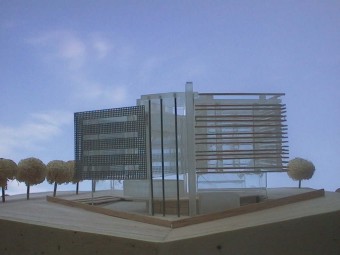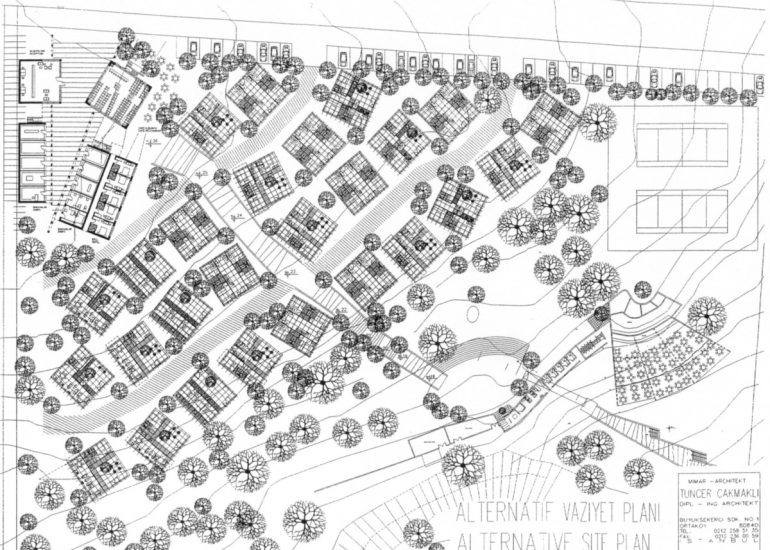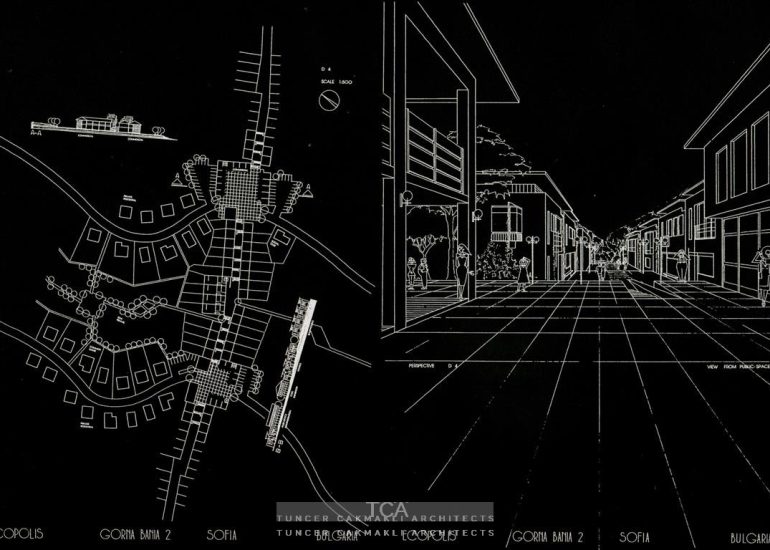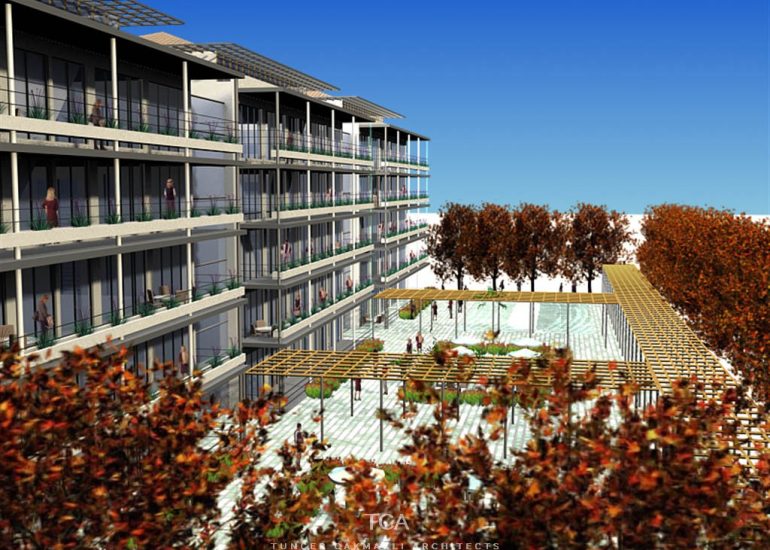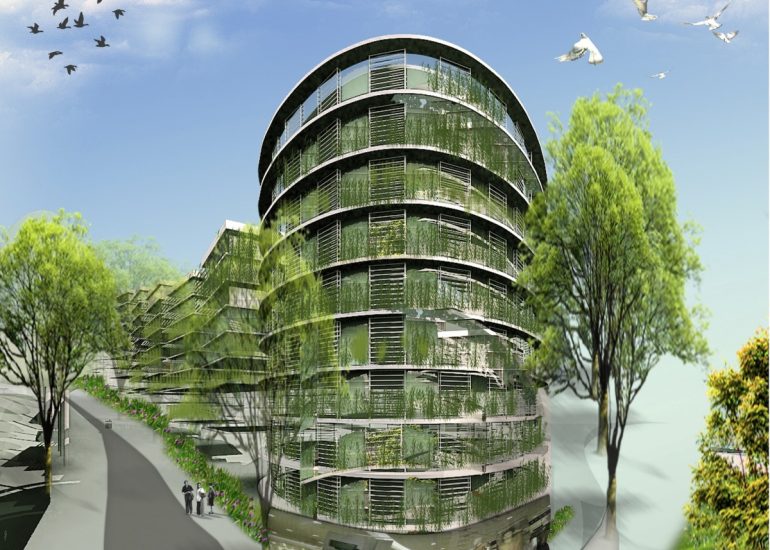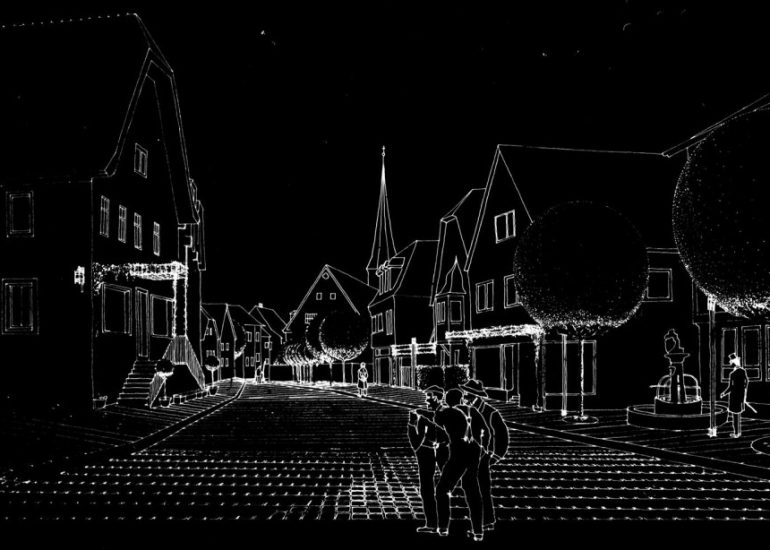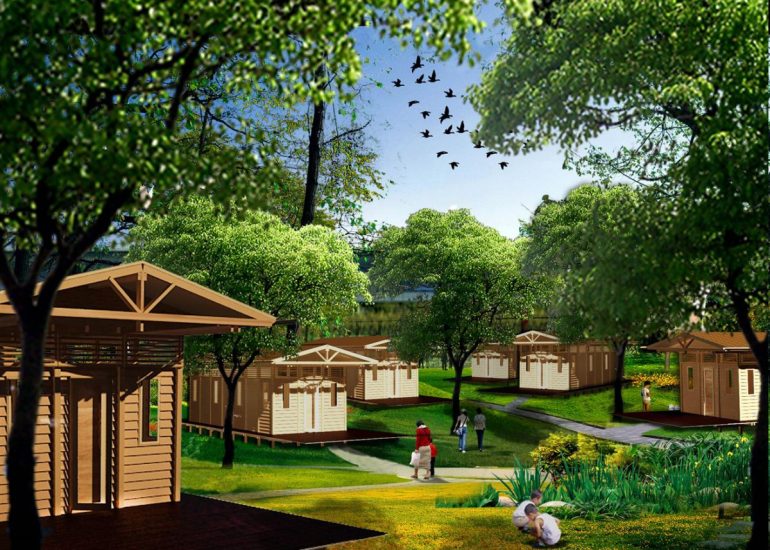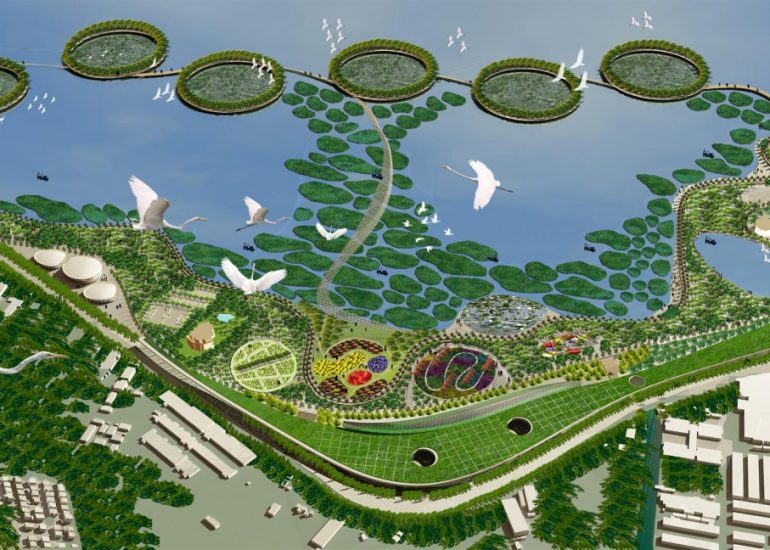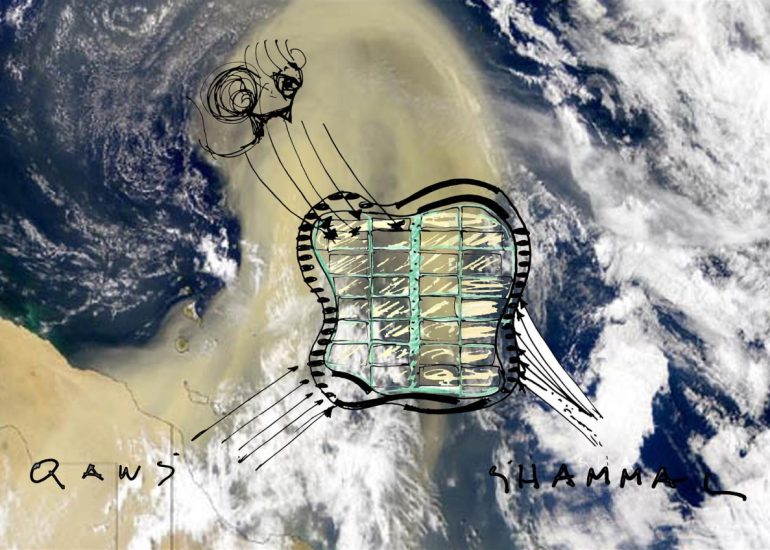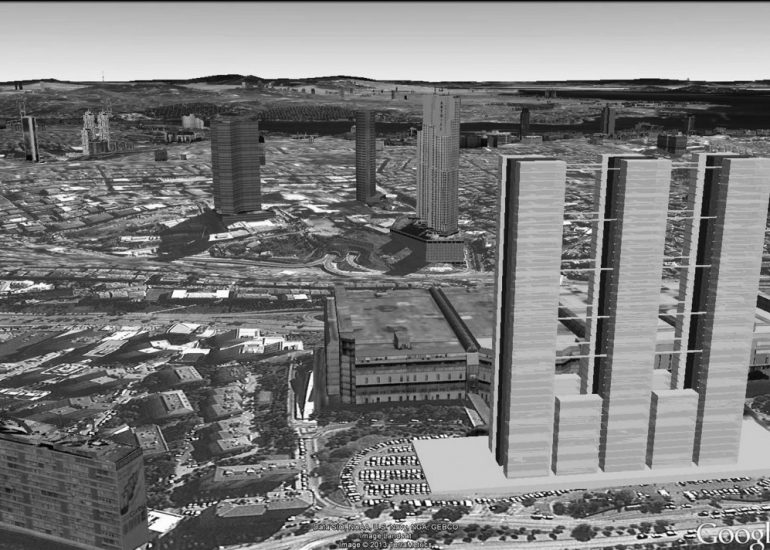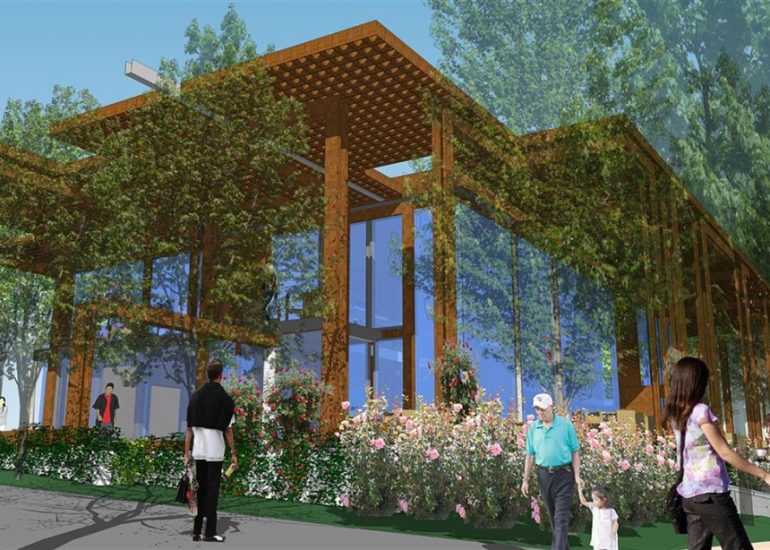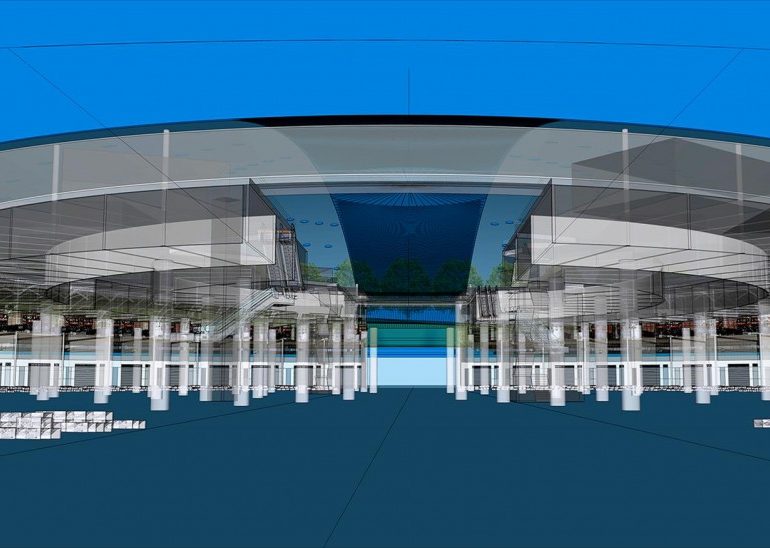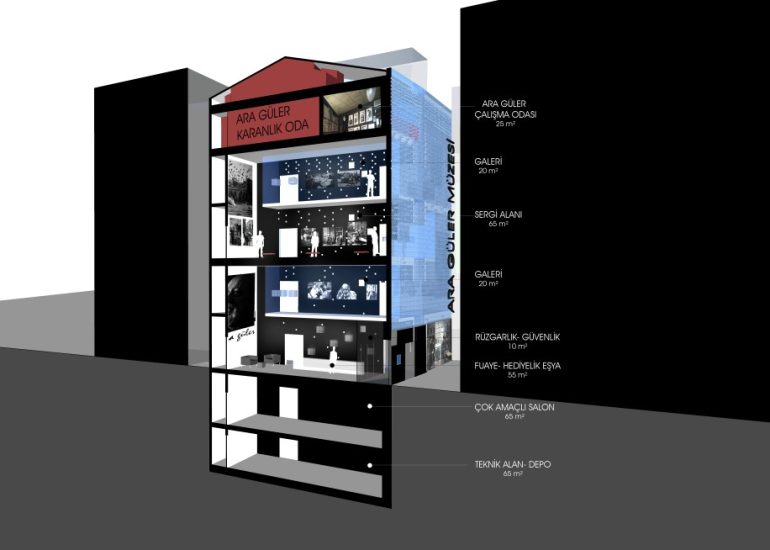BEHIND TCA DESIGN
BENCH
The Silent Alphabet of Order – SCAMNUM
In a waiting room where thousands of faces briefly meet each year, where identities are verified, travel documents issued, and diplomatic formalities performed, one might assume that the furniture is nothing more than functional scenery: pragmatic, invisible, utilitarian. Yet in the design of the bench-garderobe by TCA for the Swiss General Consulate, the opposite reveals itself. Here, the furniture becomes a manifesto—not loud, not pompous, but through a quiet yet structurally meaningful whisper upon the wall.
This linear wooden structure, which stretches along the wall like a graphic sign—a lemniscate, a Möbius strip, or even a canon—does not immediately reveal its meaning. Like every good semiotic object, it refuses the viewer mere surface and invites interpretation. For this bench is not just a bench. It is simultaneously a bench, a coat rack, a sculpture, and an ordering system—a spatial sign that does not oppose the room but seems to shape it.
It begins low at the floor, where it functions as seating. But rather than ending anywhere, it rises toward the entrance. Its steps become shelves; its elevation turns into a coat rack. It evokes a Gregorian chant rising slowly from a low tone, gaining volume yet following the same rhythm throughout. It is, in Eco’s words, an open work: its use is fixed—you can sit on it, hang clothes on it—yet it remains open to interpretation. An order for the waiting, who willingly line up or make themselves part of the room’s sculpture.
Thus, the piece becomes a semiotic interface between body, space, and institution. It offers not just support for the body, but a frame for waiting—a state that in consulates is never merely functional, but deeply symbolic. To wait means: to desire, to hope, to fulfill. And here exactly, TCA’s bench is a subtle sign of state hospitality. It says: “Here is a place for you—not just anywhere, but right here. You are part of an ordered structure.”
It is a design that reveals architecture’s discreet power: it guides without forcing. It offers without imposing. It is there even when no one is there. A bench where even absence sits.
And perhaps, if one listens very quietly, the bench speaks—not in sentences, but in lines. Not in words, but in wood.
————————————————————
Düzenin Sessiz Alfabesi
Her yıl binlerce yüzün kısa bir süreliğine buluştuğu, kimliklerin kontrol edildiği, seyahat belgelerinin verildiği ve diplomatik işlemlerin gerçekleştirildiği bir bekleme odasında, mobilyaların sadece işlevsel bir dekor olduğu düşünülebilir: pragmatik, görünmez, kullanışlı. Ancak İsviçre Genel Konsolosluğu için TCA tarafından tasarlanan bank-garderobda tam tersi ortaya çıkar. Burada mobilya bir manifesto olur—gürültülü değil, gösterişli değil, ama duvara usulca, ama yapısal olarak anlamlı bir fısıltı gibi dokunur.
Duvara doğru kayan bu lineer ahşap yapı, bir grafik işaret gibi—bir lemniskat, Möbius şeridi ya da bir kanon gibi—anlamını hemen açığa çıkarmaz. Her iyi göstergebilimsel nesne gibi, yüzeyde kalmayı reddeder ve izleyiciyi okumaya davet eder. Çünkü bu bank sadece bank değildir. Aynı zamanda bank, gardırop, heykel ve bir düzen sistemidir—mekâna karşı durmaz, aksine onu şekillendirir gibi görünür.
Zeminde başlar; oturma yeri olarak işlev görür. Ama bir yerde sonlanmak yerine, girişe doğru yükselir. Basamakları raf olur, yükselişi ise gardırop işlevi kazanır. Düşük bir sesle başlayan ve yavaşça yükselen bir gregoryen ilahiye benzer; hacim kazanır ama hep aynı ritmi takip eder. Eco’nun sözleriyle, açık bir esertir: kullanımı belirlenmiştir—oturulur, kıyafet asılır—ama yorumlara açıktır. Sıralanmayı kabul eden bekleyenler için bir düzen, ya da kendi başına mekânda dinlenme imkanı.
Böylece bu parça beden, mekân ve kurum arasında göstergebilimsel bir arayüz olur. Sadece bedene destek sunmaz, bekleme durumuna da çerçeve çizer—ki konsolosluklarda beklemek asla sadece işlevsel değil, derin anlamlar taşır. Beklemek demek: arzu etmek, umut etmek, yerine getirmek demektir. İşte tam burada, TCA’nın bankı devletin misafirperverliğinin ince bir işaretidir. Der: “Burada, sadece herhangi bir yerde değil, tam burada senin için yer var. Sen bu düzenin bir parçasısın.”
Bu tasarım mimarinin ince gücünü ortaya koyar: Zorlamadan yönlendirir. Dayatmadan sunar. Oradadır, kimse olmadığında bile. Yokluğun bile oturduğu bir bank.
Ve belki de çok sessizce dinlersen, bank konuşur—cümlelerle değil, çizgilerle. Kelimelerle değil, ahşapla.
The Archıtecture of Thought: Spaces as Carrıers of Lıfe
When the architect designs spaces, it is never merely about erecting walls, ceilings, and floors. Architecture is not simply the craft of construction, but an act of thinking — an attempt to translate human life into geometric and material order. This becomes especially evident where spaces for work are created. For working spaces demand more than pure functionality; they demand a particular attention that conceives the room not only as a container, but as an active partner in human existence.
Walls, ceilings, and floors are not neutral elements. They are the makers of space, but at the same time they are limits that define, restrict, and orient. Within this dialectic of openness and closure, of possibility and boundary, the true task of the architect begins. The thinking architect knows that no element carries only a single function. A wall is not merely separation; it is also support. It can be a partition, a seat, a backrest, even a stage. The floor is not just a surface; it can become a slope, a podium, a meeting place. The corridor is not only a passage; it becomes a street, and its recesses transform into places of pause, into niches of human encounter.
Thus emerges an architecture that points beyond mere construction. It is an architecture that grants meaning to life by reshaping the ordinary. What appears to be a simple corridor may become an urban gesture inside a building, a small cosmos of movement and meeting. What begins as a wall may become a social sculpture.
The thinking of the architect consists in linking permanence with change. Spaces must endure — they must withstand time — and yet remain open to additional uses, improvisation, and the unforeseen. The true value of architecture lies not in material alone, but in its ability to layer meanings, to overlap functions, and to give depth to everyday life.
———————————————————————————————————————————————————
Düşüncenin Mimarisi: Hayatın Taşıyıcıları Olarak Mekânlar
Mimar mekânları tasarlarken mesele hiçbir zaman yalnızca duvarlar, tavanlar ve zeminler inşa etmek değildir. Mimarlık, basitçe bir inşa zanaatı değil, bir düşünme eylemidir; insan yaşamını geometrik ve maddi bir düzene dönüştürme çabasıdır. Bu özellikle çalışma mekânlarının yaratıldığı yerde belirginleşir. Çünkü çalışma mekânları salt işlevsellikten fazlasını talep eder; mekânı yalnızca bir kap değil, insan varoluşunun etkin bir ortağı olarak gören özel bir dikkati gerektirir.
Duvarlar, tavanlar ve zeminler nötr öğeler değildir. Onlar mekânın kurucularıdır, aynı zamanda sınırlar çizer, kısıtlar, yön verirler. Açıklık ile kapanma, imkân ile sınır arasındaki bu diyalektikte mimarın asıl görevi başlar. Düşünen mimar bilir ki hiçbir öğe yalnızca tek bir işleve sahip değildir. Duvar yalnızca ayırıcı değildir; aynı zamanda taşıyıcıdır. Bir bölücü, bir oturma yeri, bir dayanak, hatta bir sahne olabilir. Zemin sadece bir yüzey değildir; bir eğim, bir podyum, bir buluşma noktası olabilir. Koridor yalnızca bir geçiş değildir; o bir sokağa dönüşür, girintileri ise bekleme ve karşılaşma mekânlarına, insani nişlere dönüşür.
Böylece mimarlık, salt inşanın ötesine işaret eder. Sıradanı yeniden biçimlendirerek yaşama anlam katan bir mimarlık ortaya çıkar. Basit bir koridor, bir binanın içinde kentsel bir jest, karşılaşmalar ve hareketler için küçük bir evren olabilir. Bir duvar, bir toplumsal heykel haline gelebilir.
Mimarın düşüncesi, kalıcılık ile değişkeni birbirine bağlamaktan ibarettir. Mekânlar dayanıklı olmalı — zamana direnç göstermeli — ama aynı zamanda ek kullanımlara, doğaçlamalara, öngörülmeyene de açık kalmalıdır. Mimarlığın gerçek değeri yalnızca malzemede değil, anlamları katmanlaştırma, işlevleri üst üste bindirme ve gündelik yaşama derinlik verme yeteneğindedir.


